
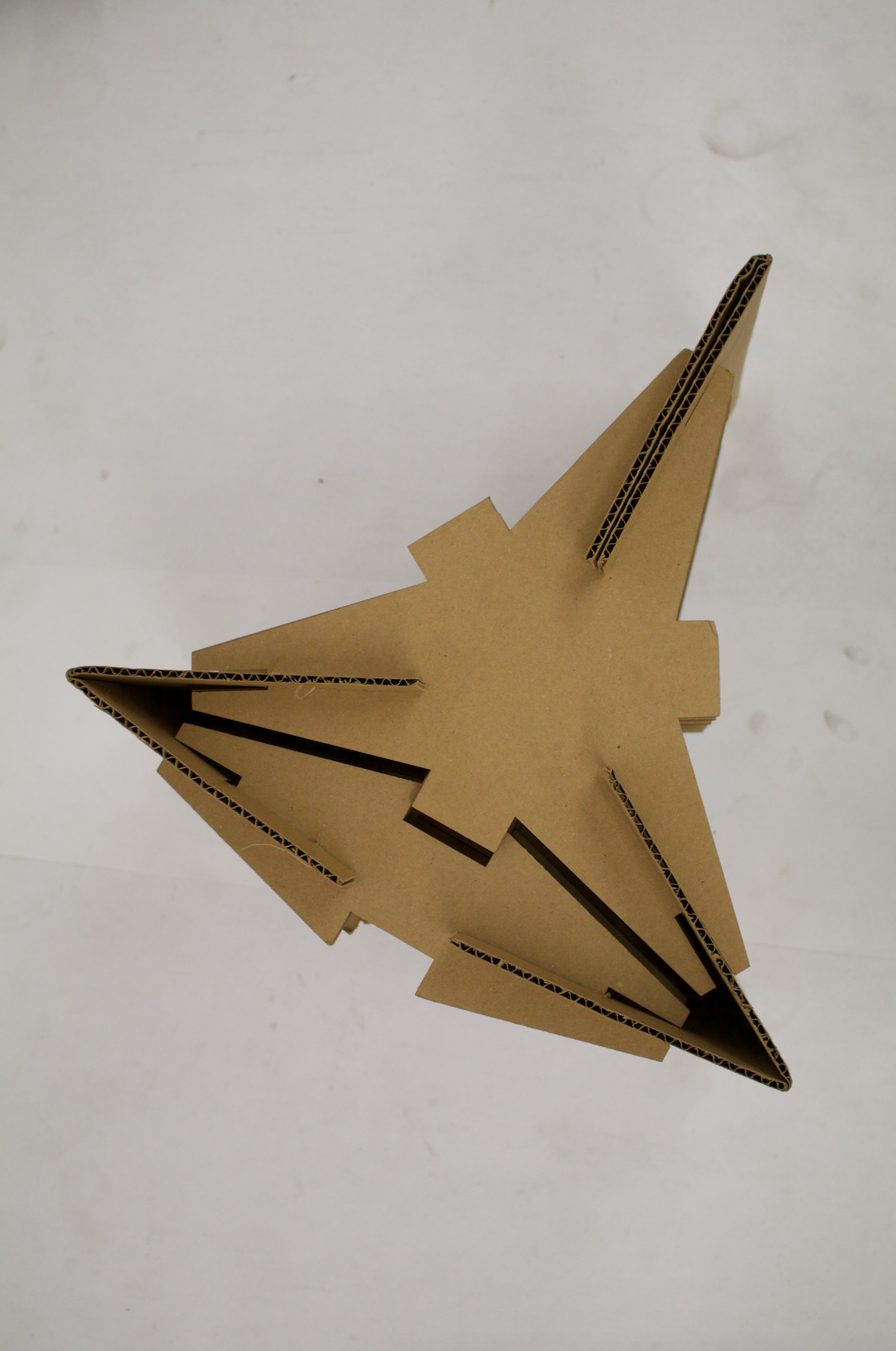

This was the Binary Modular System Chair Design assignment for Ken Horii's Spatial Dynamics class, Fall 2017.
The assignment was to develop a binary modular system capable of being replicated in multiples and assembled into a minimum of three significantly different configurations of a functional adult-sized chair. The modular set should consist of pairs of elements designed as joint modules and extender modules.
Requirements/Constraints included
-You may only use single ply (paper both sides) corrugated cardboard for your modules.
-At least one of your chair configurations must include a fully-functional backrest.
-The chair must be adult-scale and able to withstand your static and dynamic weight in all configurations.
-The seat surface in all of your configurations must be a minimum average of 8 inches off the floor.
-One of your three required modular chair configurations must be designed to be portable in a stable form to fit into a test box measuring 12”x16”x24”.
-You MAY NOT use adhesive to connect modules to each other or laminate multiple layers.

The binary modular set consists of one connecter module (Left) and one extender module (Right).
Based on the constraints, I planned two major objectives I wanted the chair to consist of:
1. The chair has to be strong (has to be able to withstand dynamic and static weight of adult).
2. The chair has to be comfortable (has to 'fit the body').

In order for these two objectives to be fulfilled, I combined two structures: a triangle and a arch.
The triangle, being one of the strongest structures coming from nature, was chosen in order for the module to have strength/withstand weight.
The arch, consisting of curves, was chosen in order for the curved surface to fit in the curves of the body.
Prototype 1

Prototype 2

Prototype 3

Prototype 4
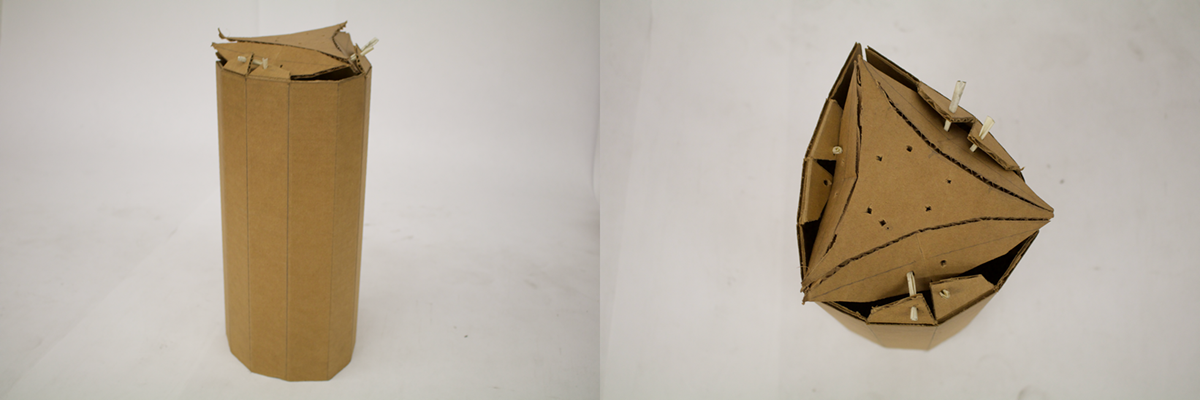
Final Module
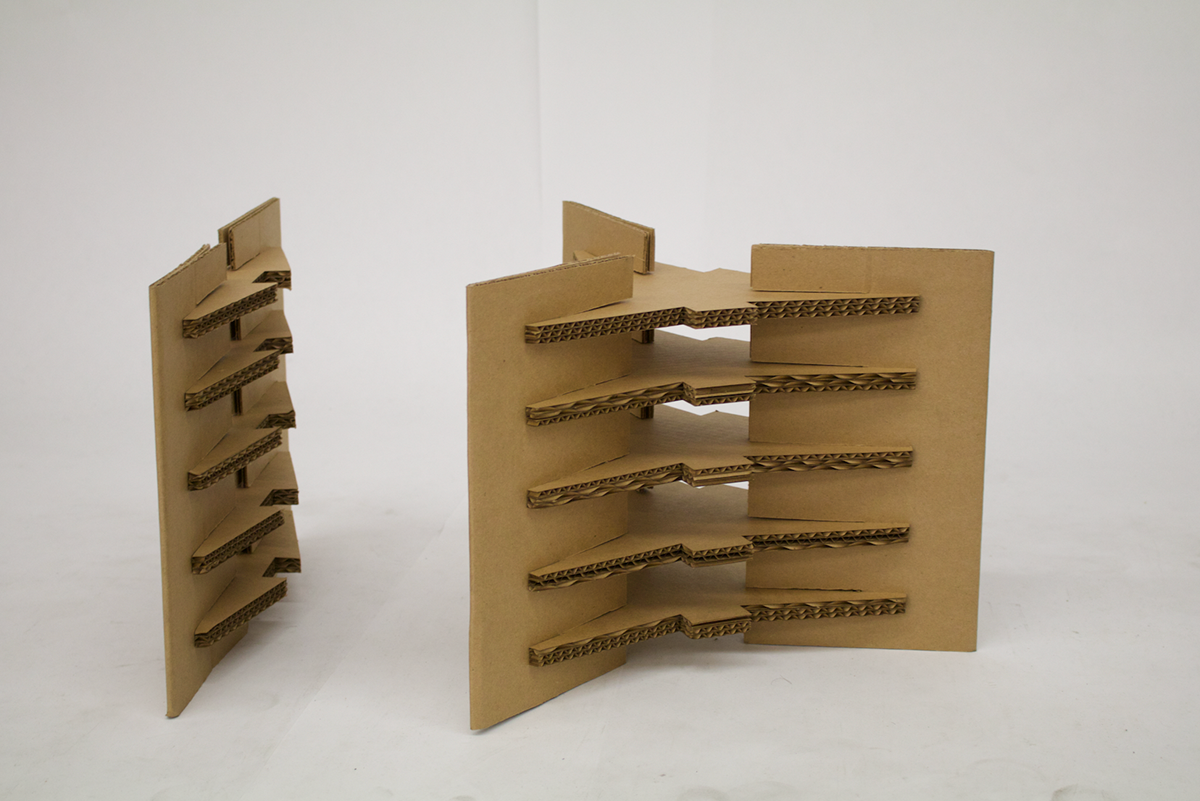
Going through the prototypes, the first few start out as the triangle and arch structure connected in one as the extender. However, for the final module, the triangle and arch are separated into two pieces each taking the role as a extender and connecter.
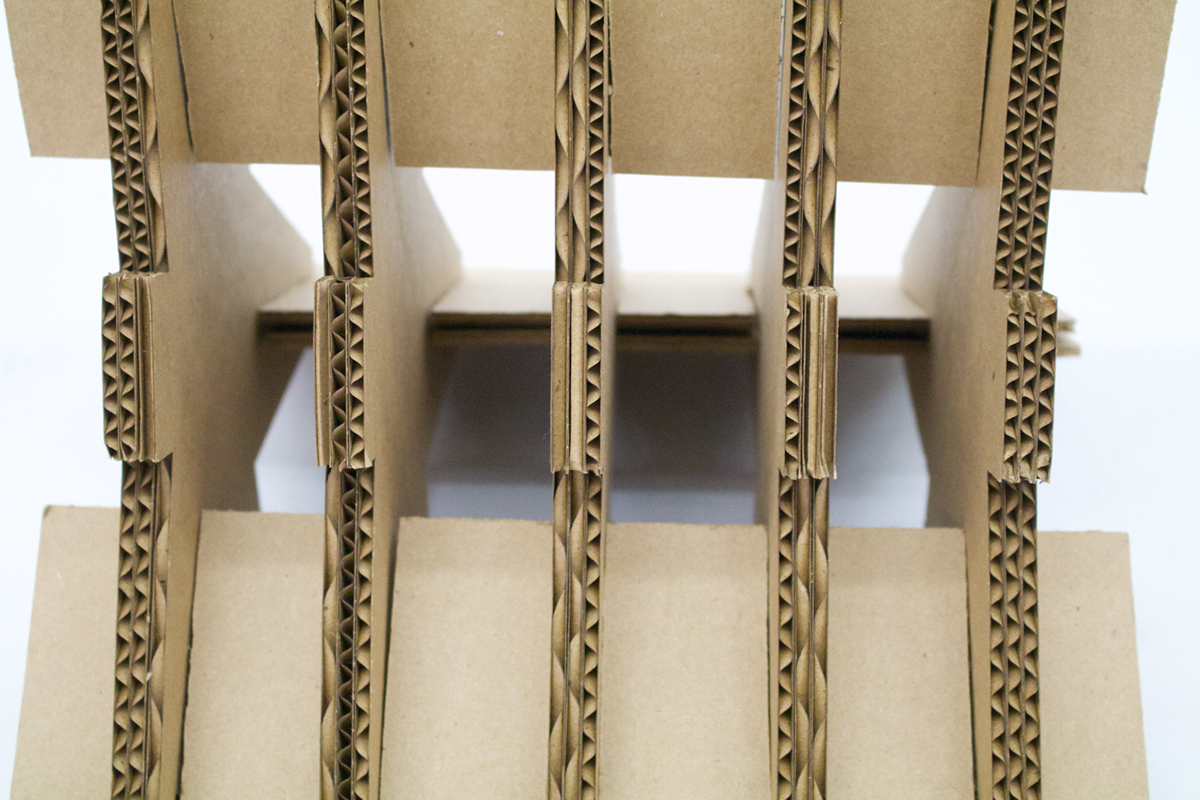
(Side View)
Each module is layered with three of five sets for each triangular or arched shape. These 15 pieces are connected together with a square piece of cardboard.
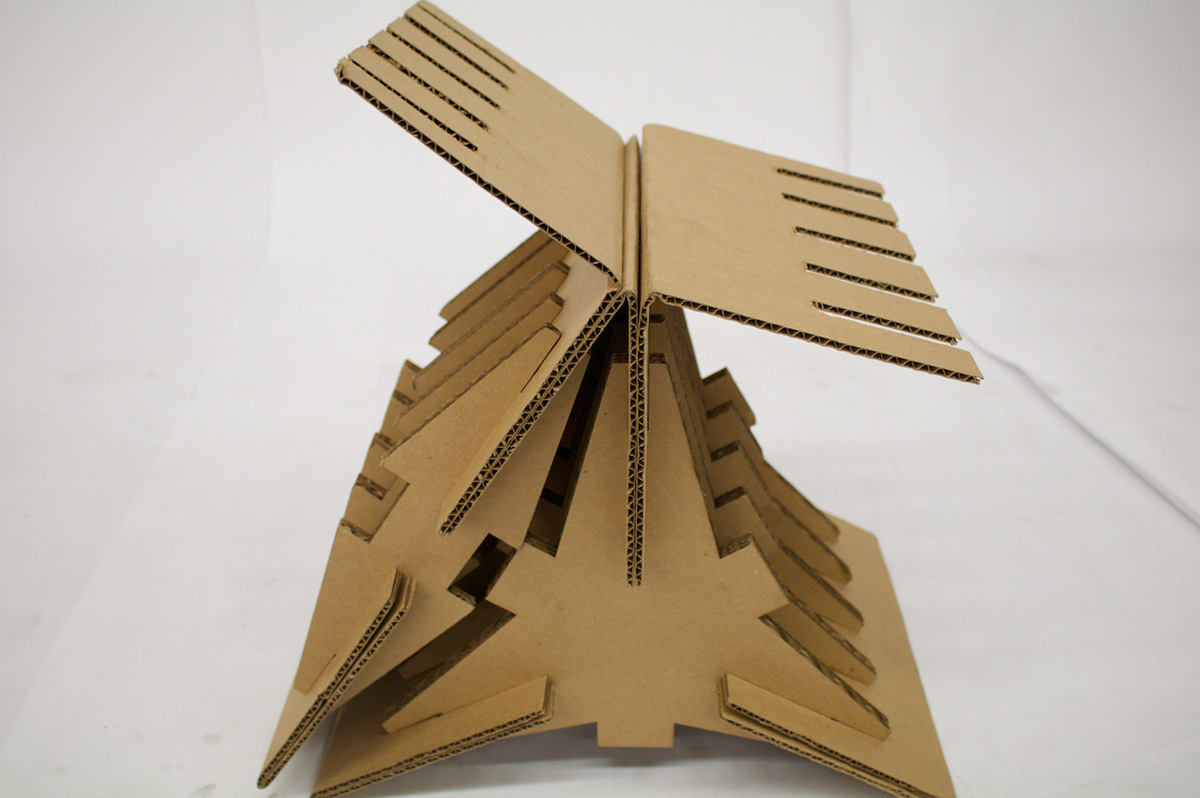
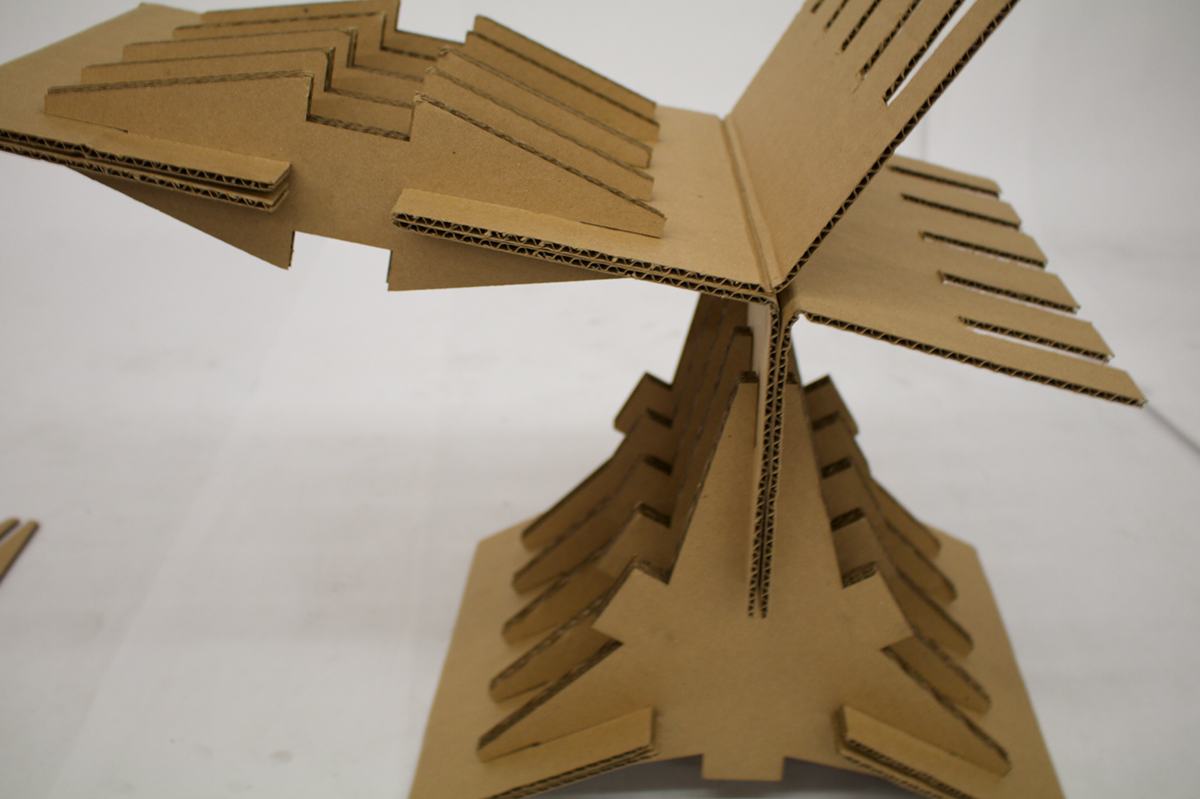
The square piece connects not only the 15 pieces together, but also the connecter module and extender module. The square piece is layered twice.
Replicating and assembling 6+ of these modules creates configurations of the following
Configuration 1


Configuration 2
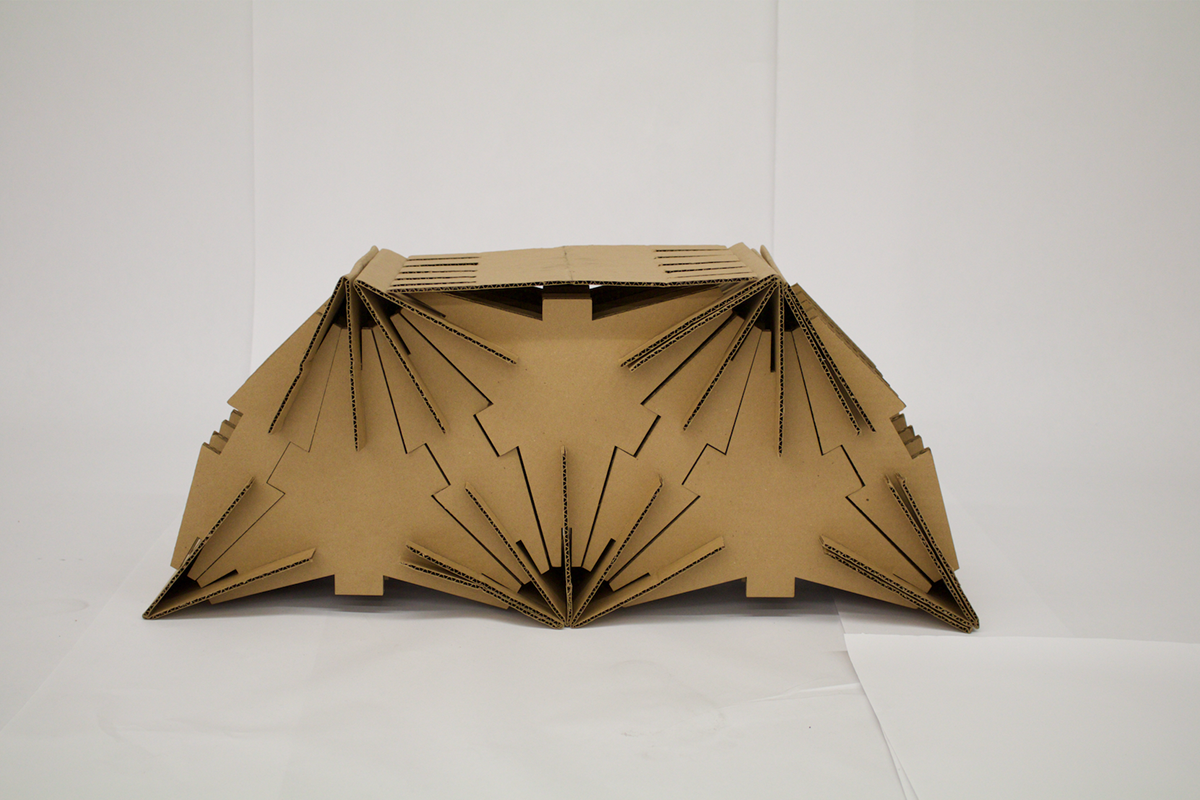
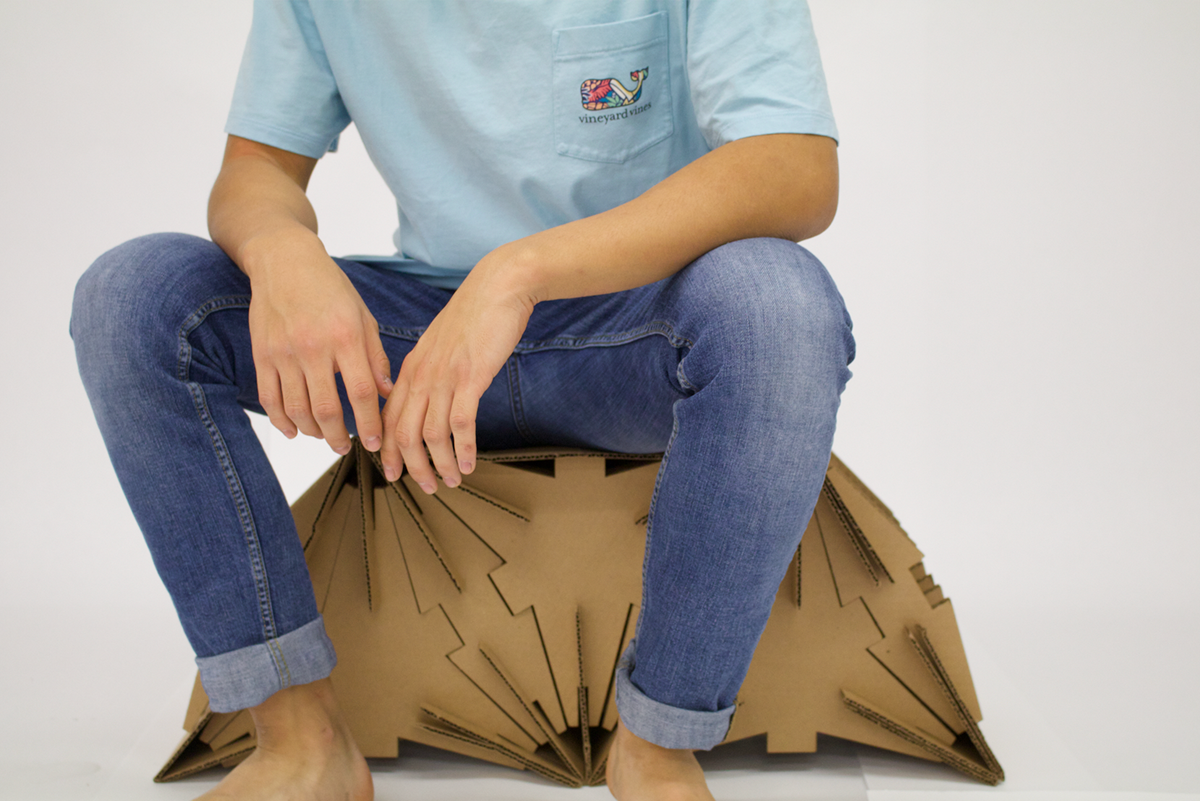
Configuration 3

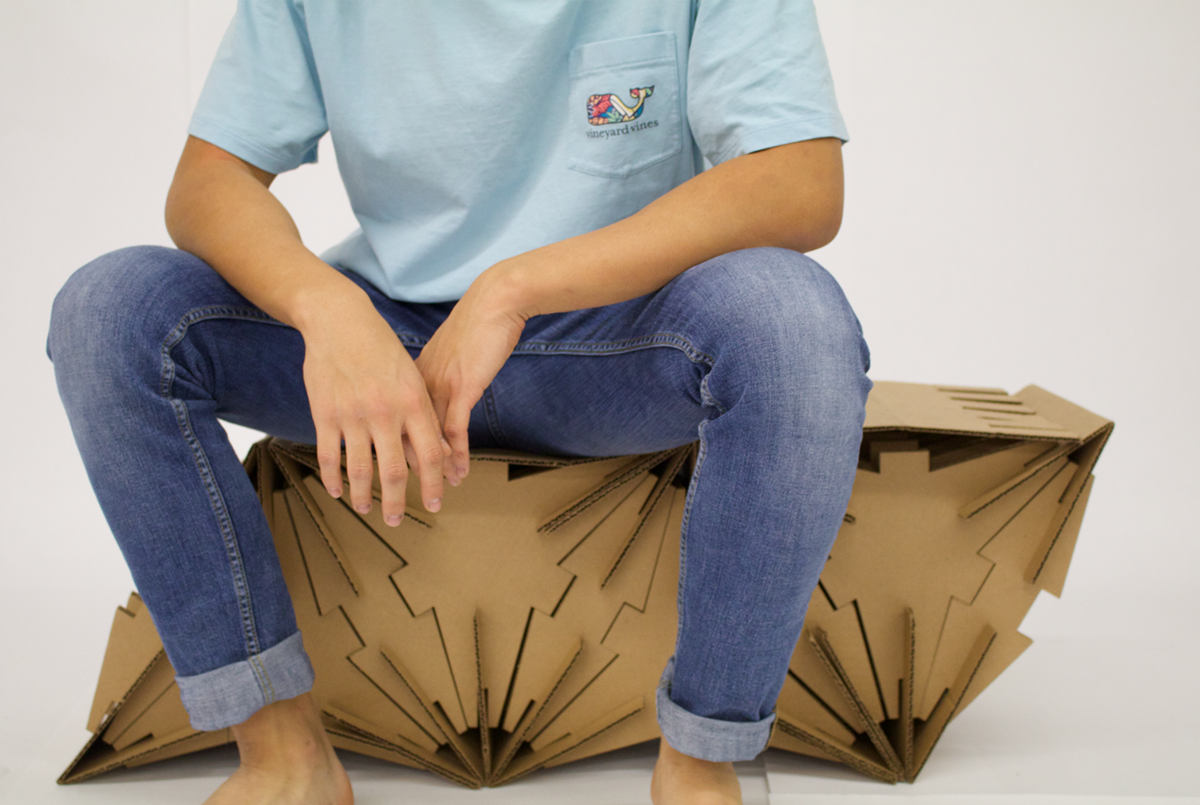
Configuration 4


Configuration 5

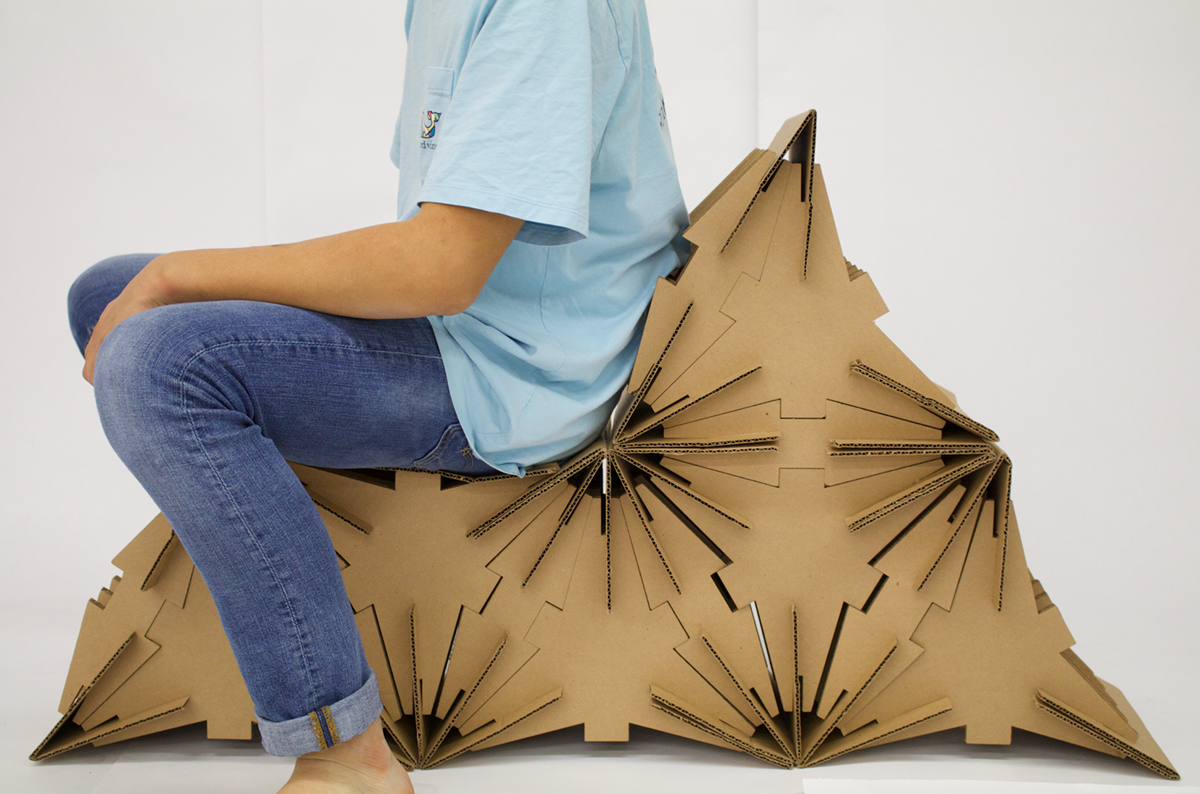
Configuration 6


Configuration 7

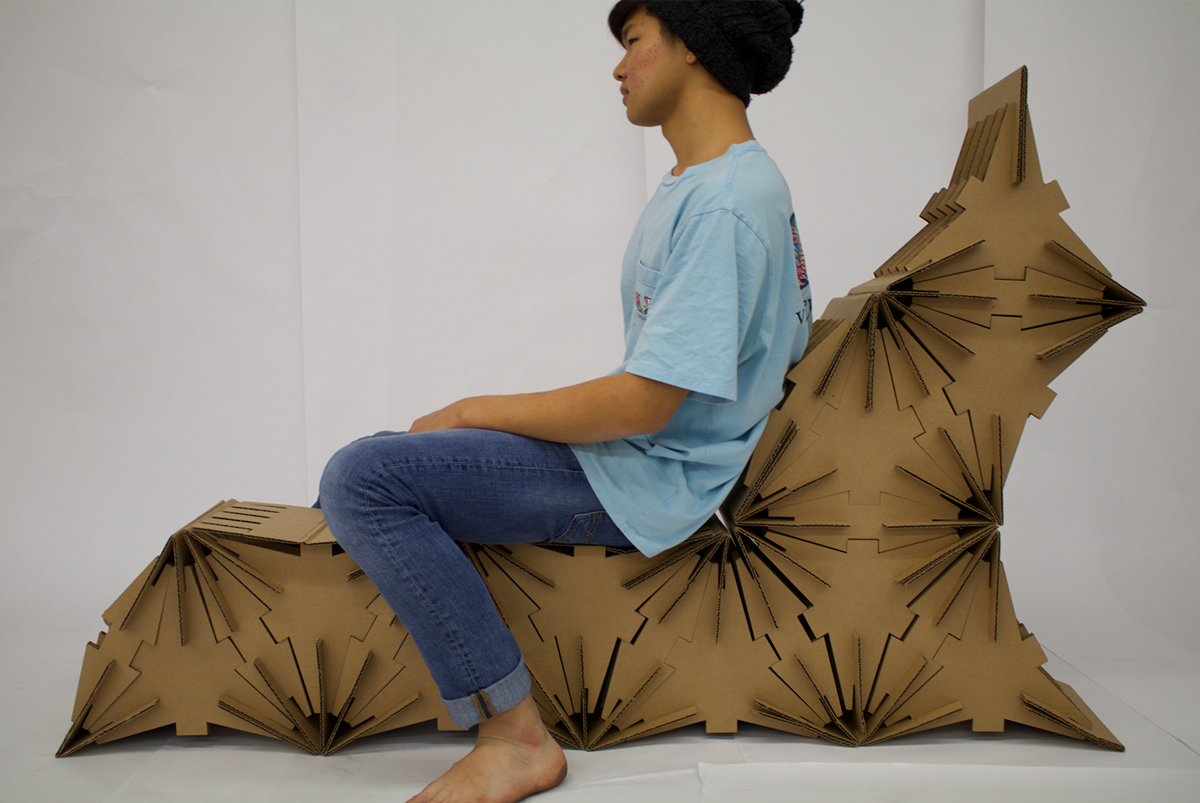
Configuration 8


Configuration 9


Configuration 10

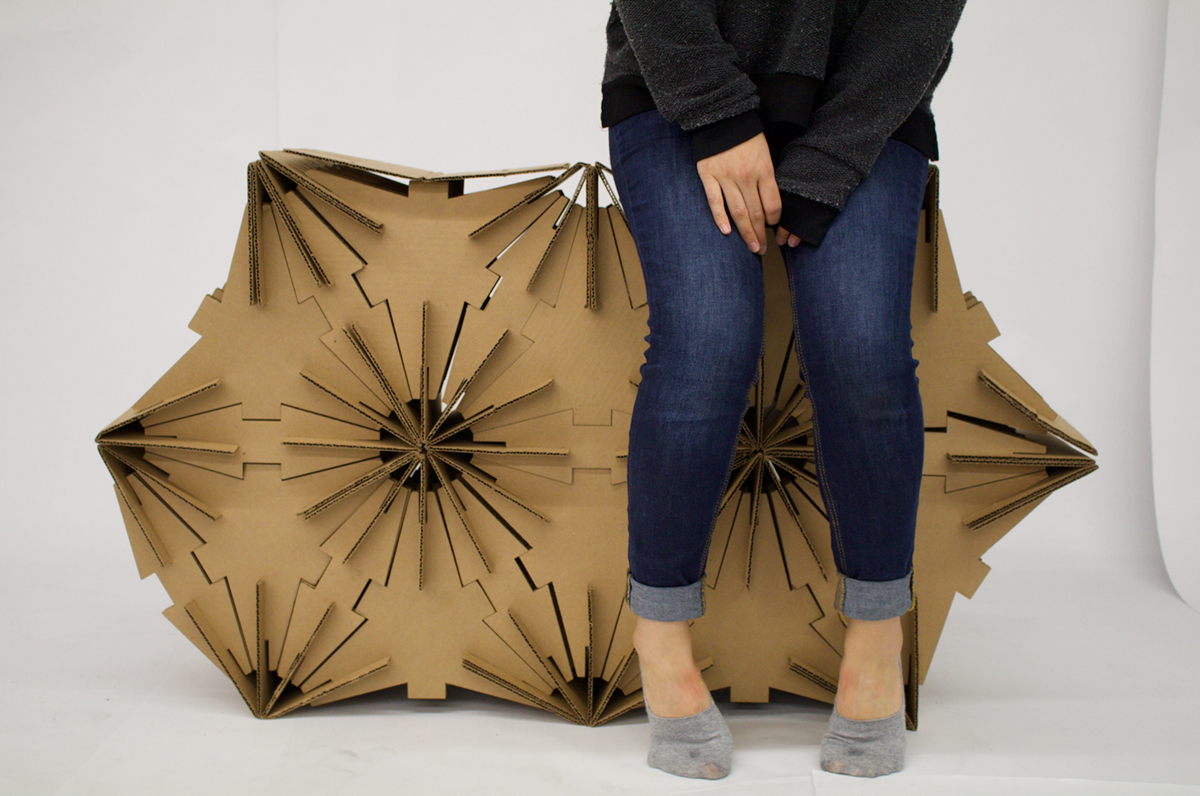
Configuration 11


Configuration 12
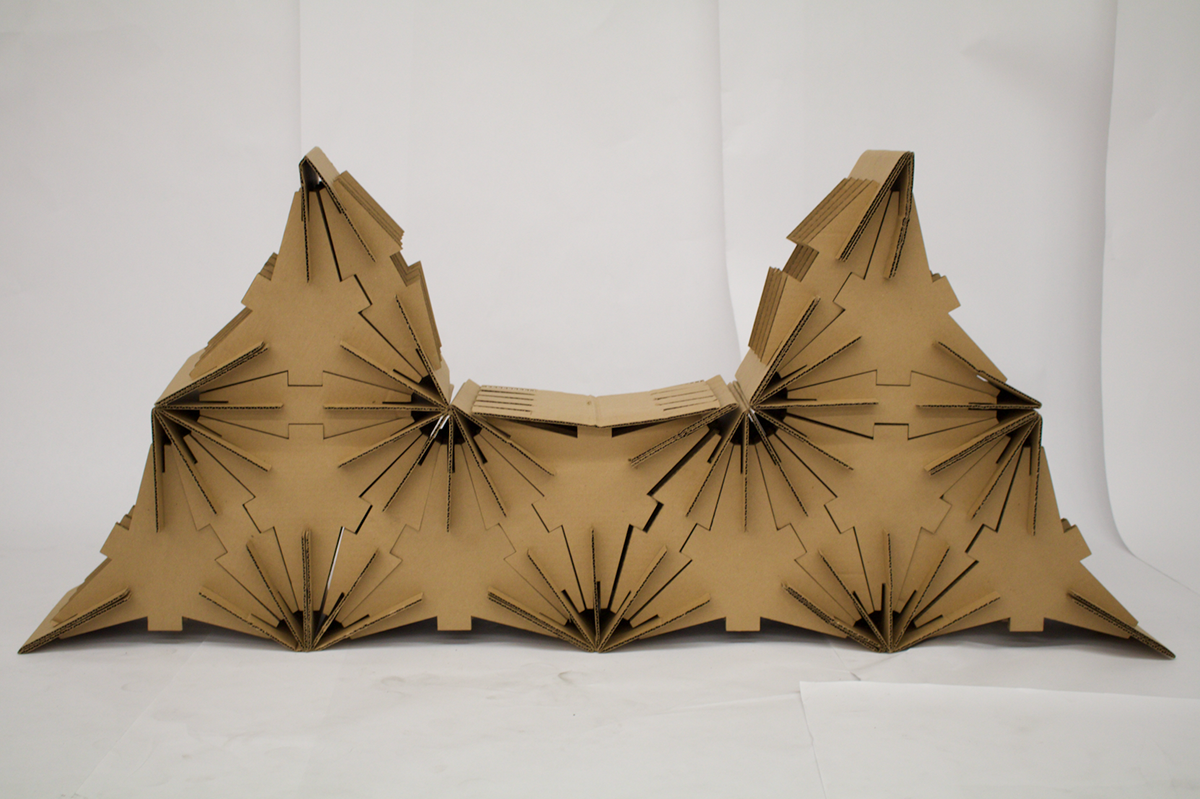

Configuration 13
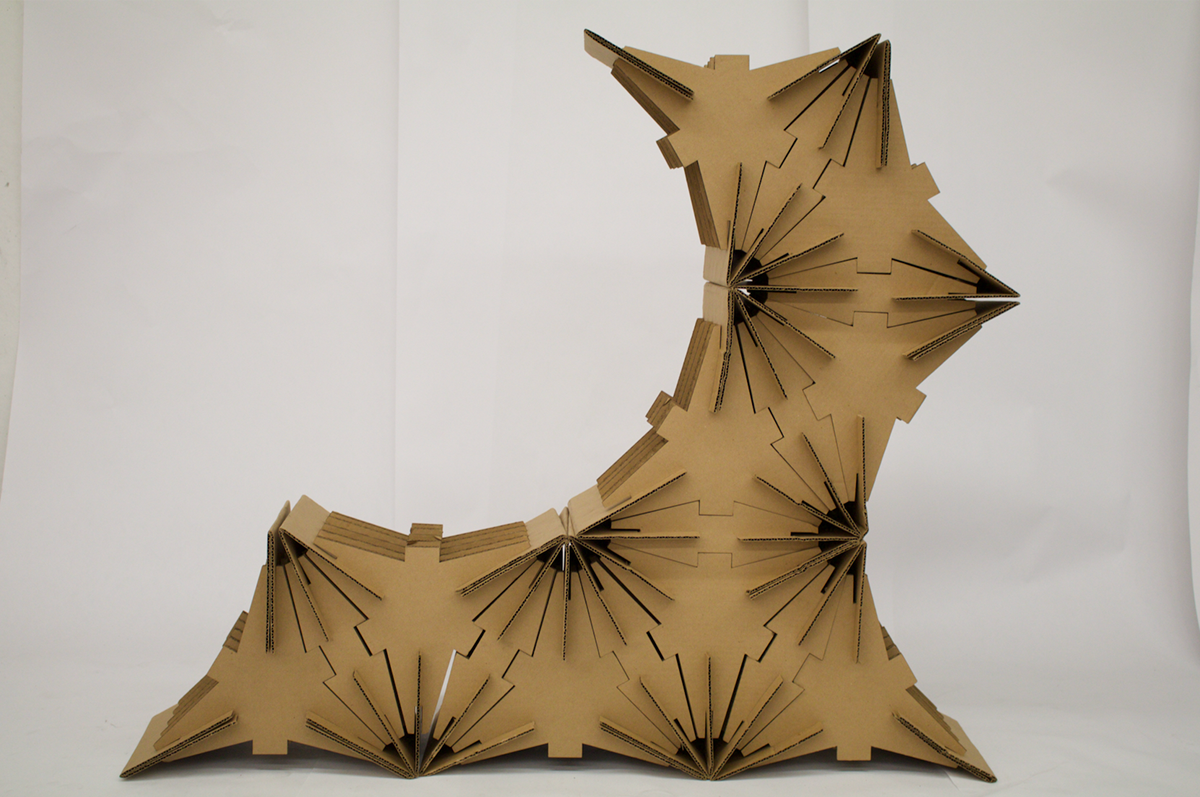
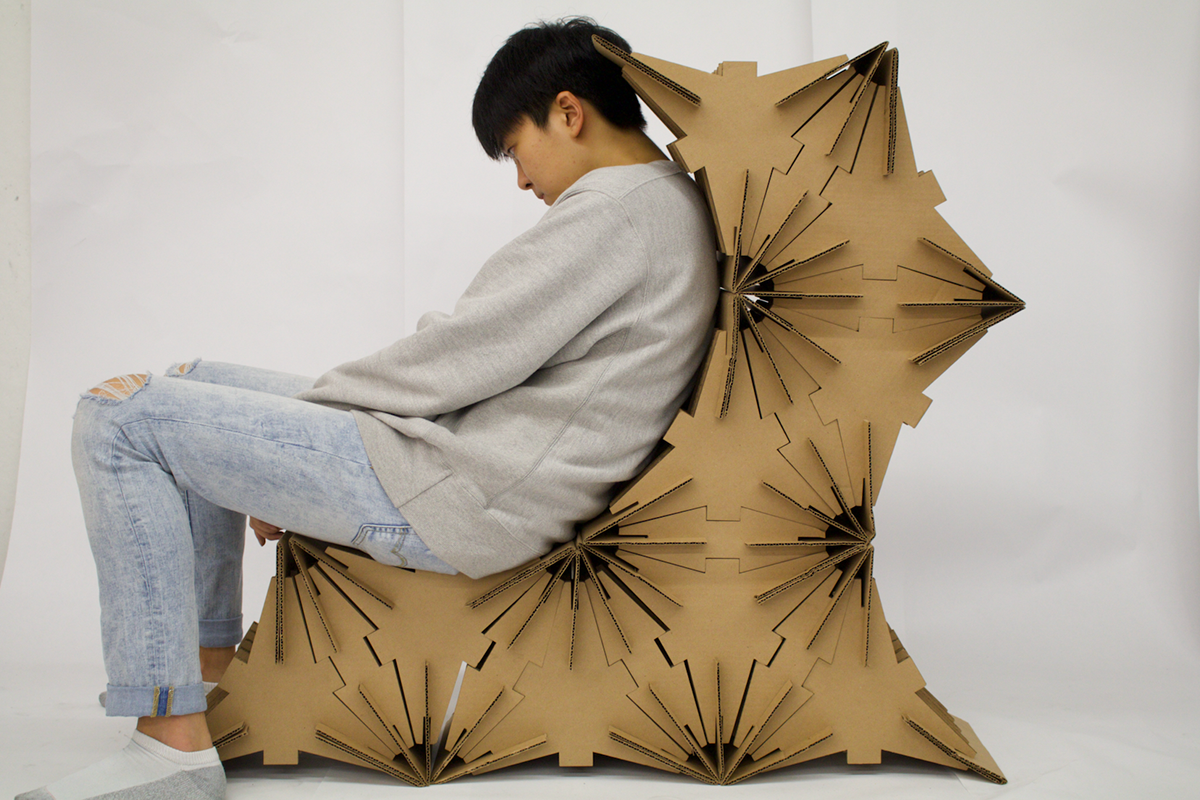
Configuration 14 (Desk)

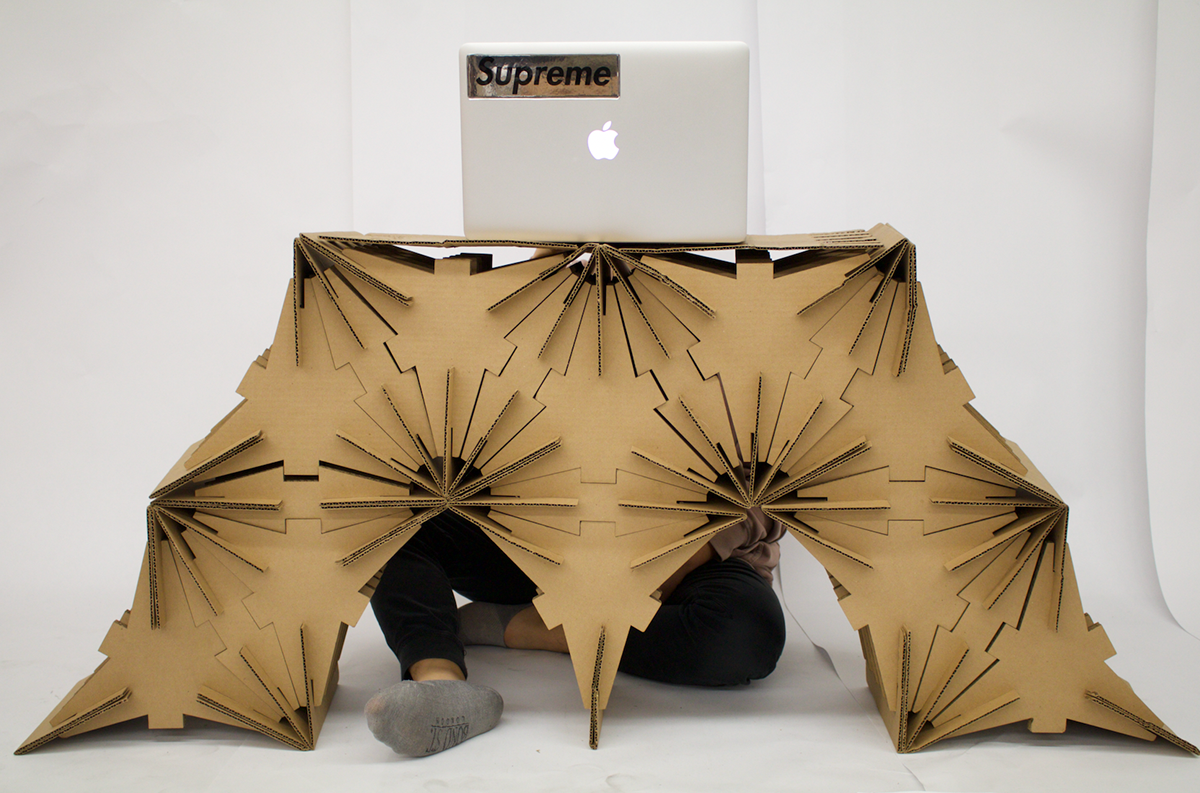
Configuration 15

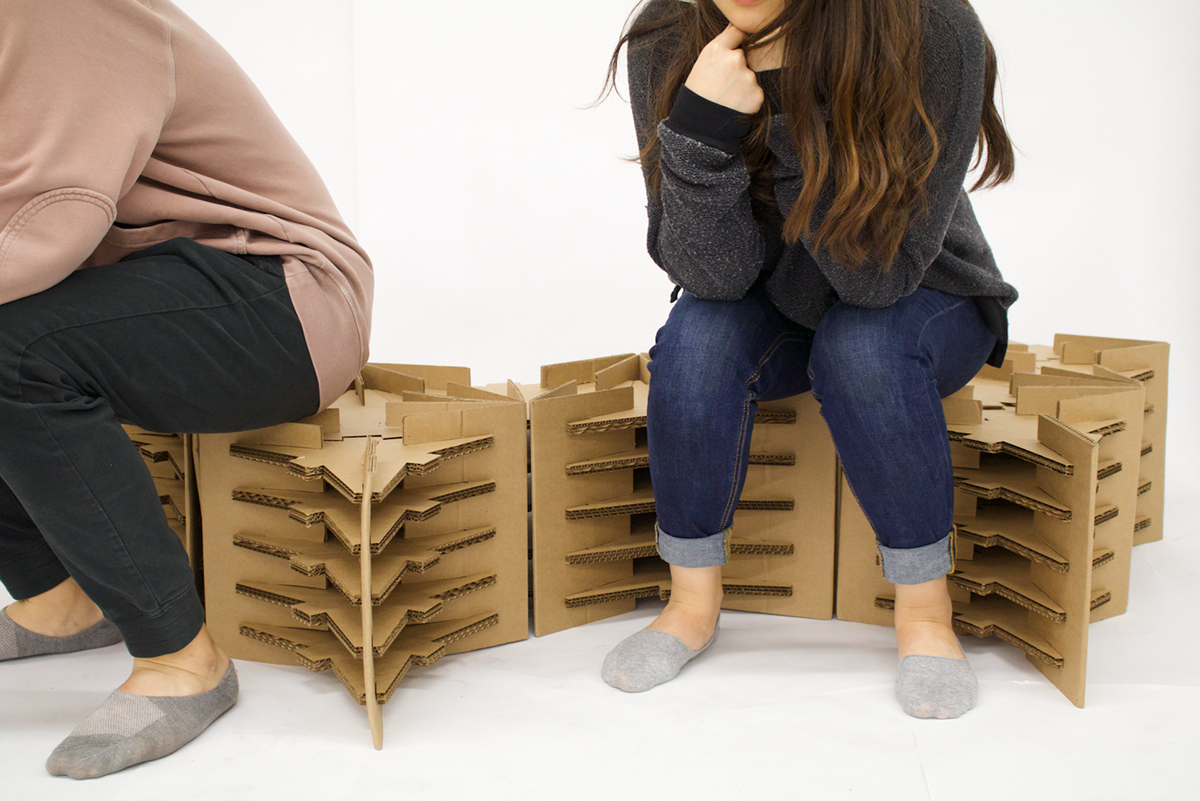
Configuration 16
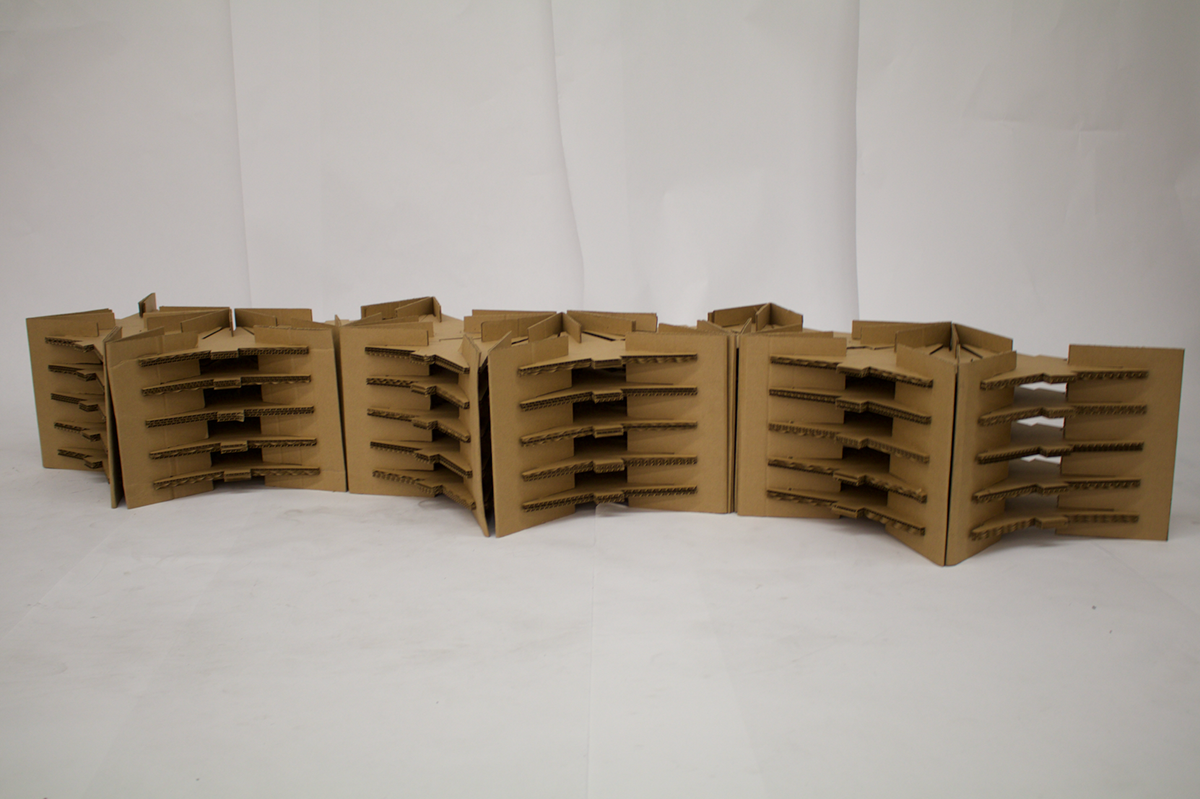
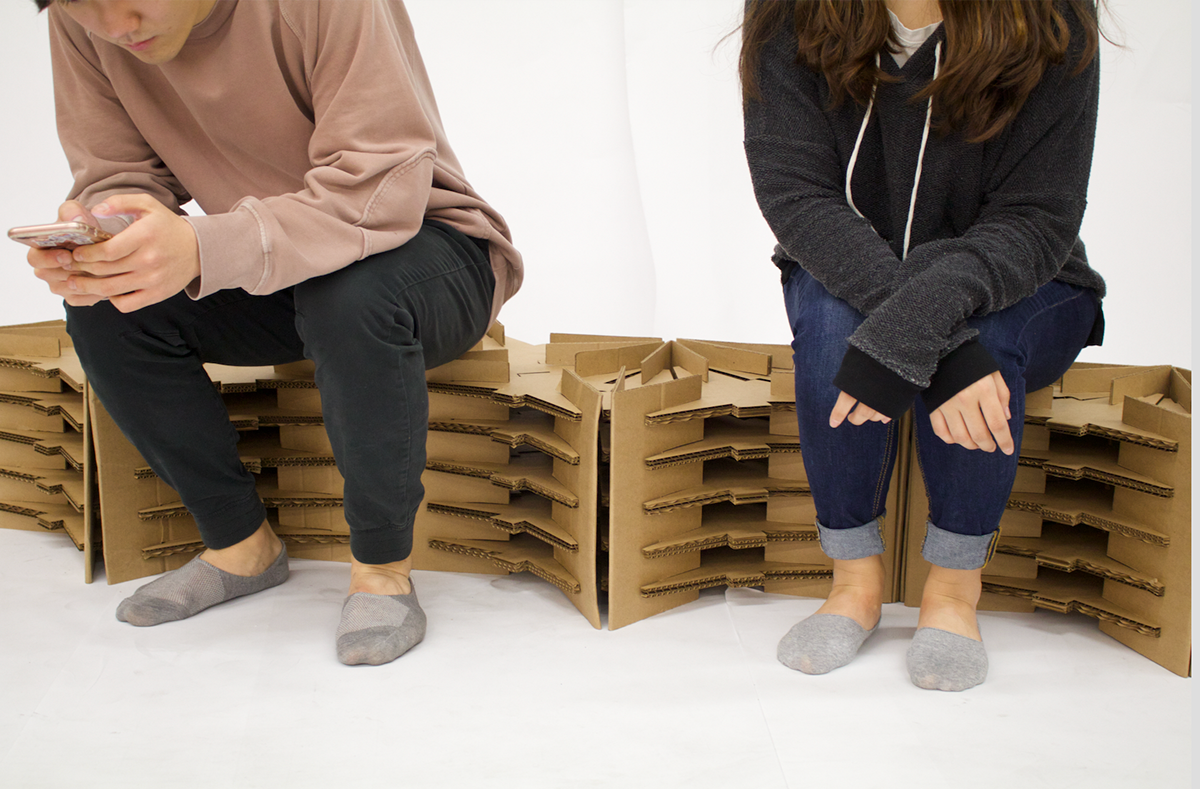
Configuration 17


Configuration 18

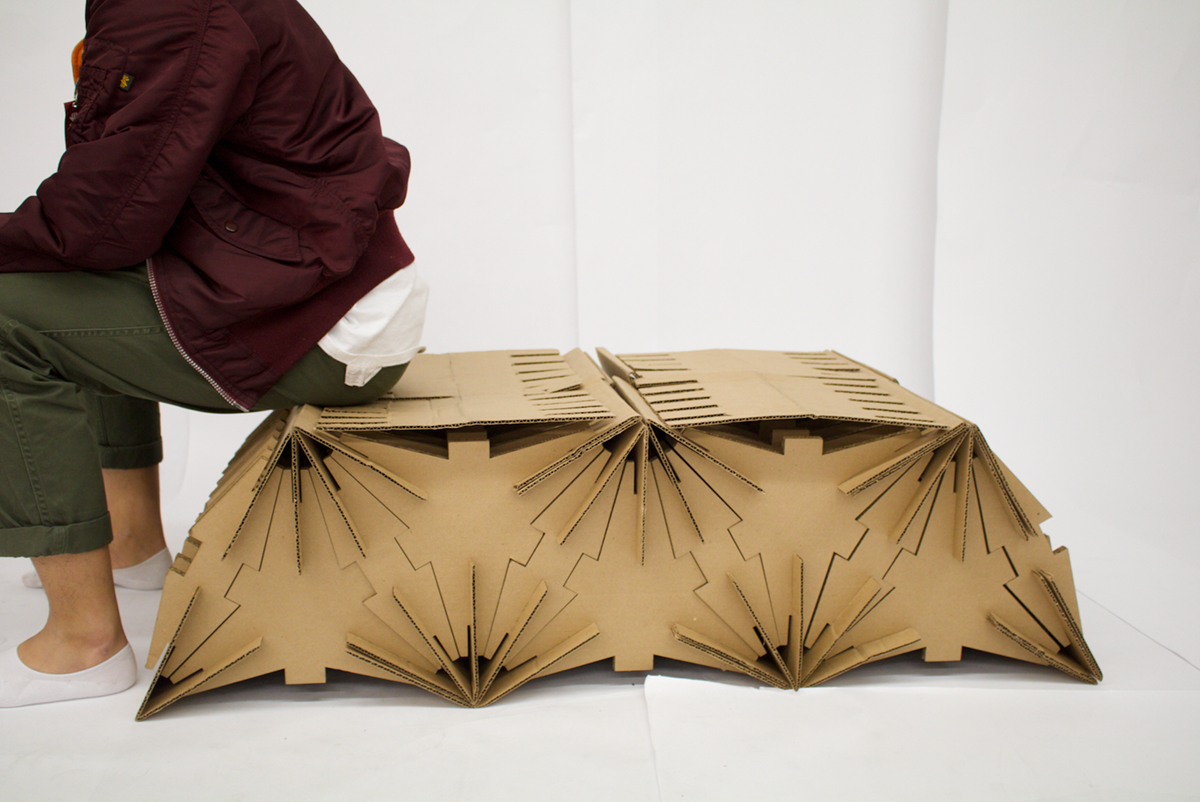
Configuration 19
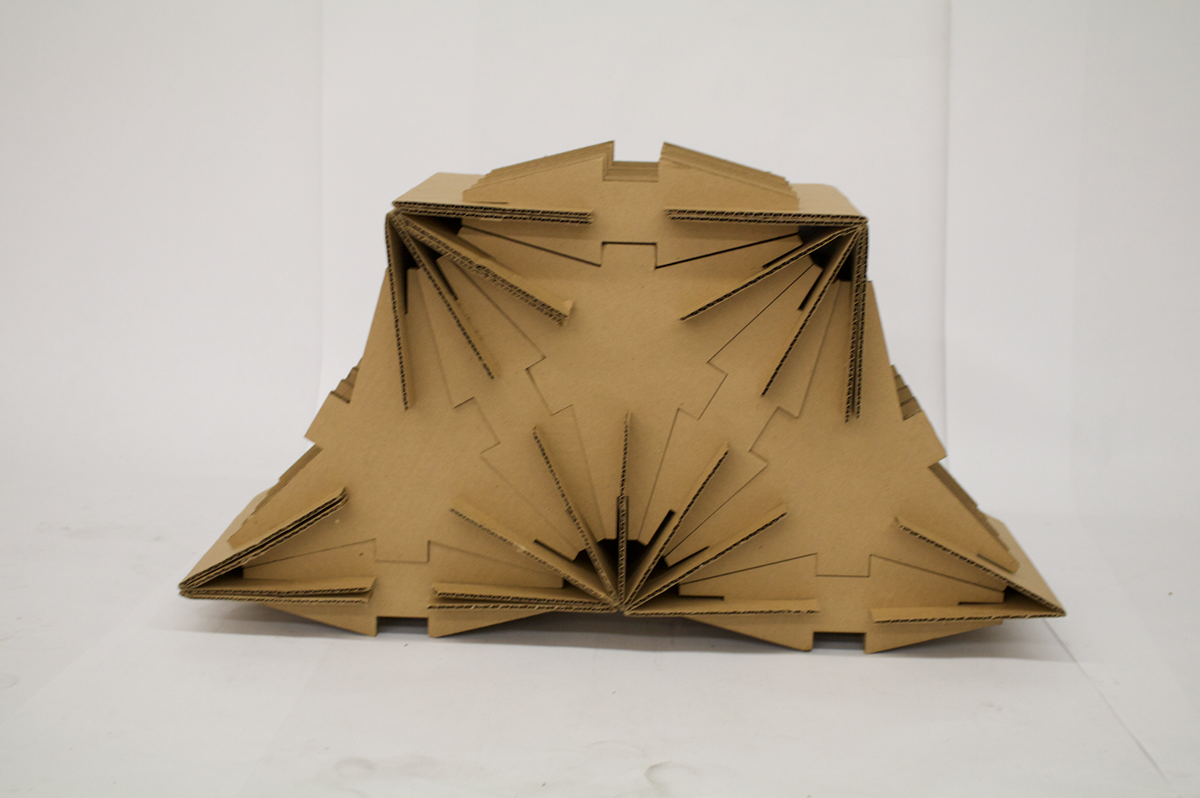

Configuration 20
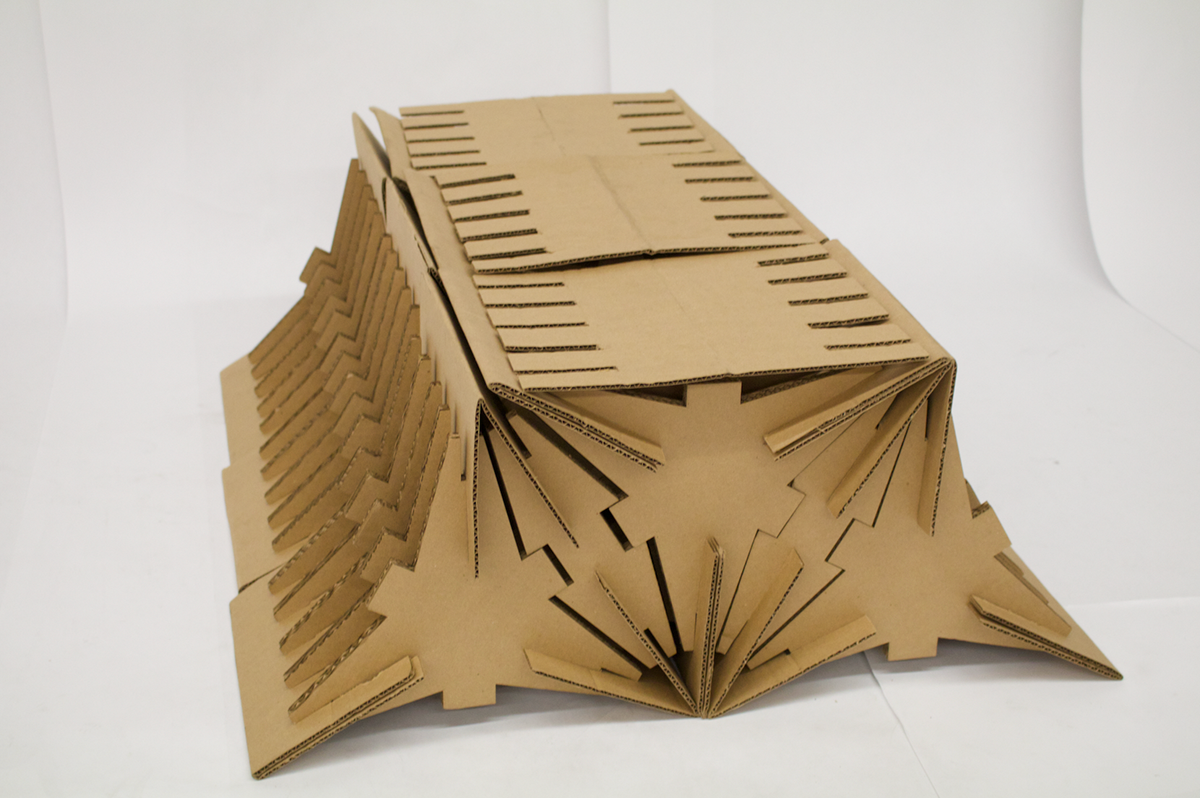

Configuration 21


Configuration 22
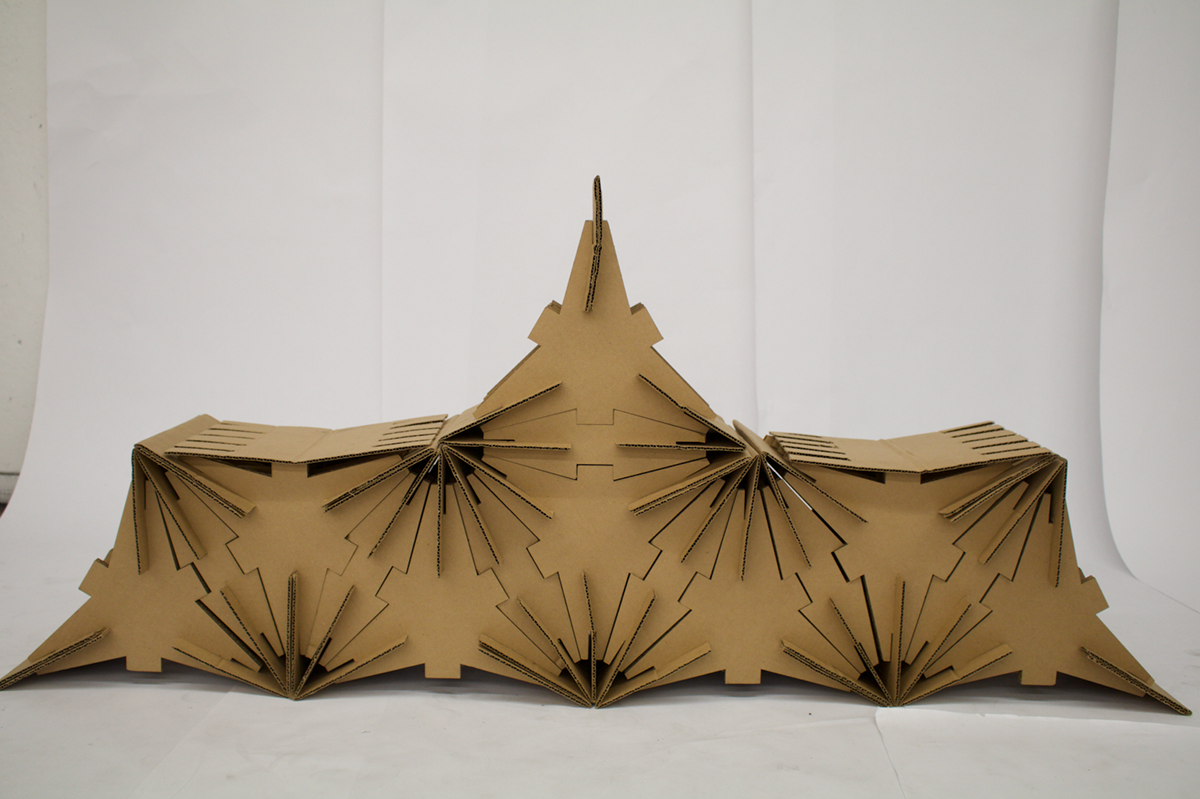

Configuration 23

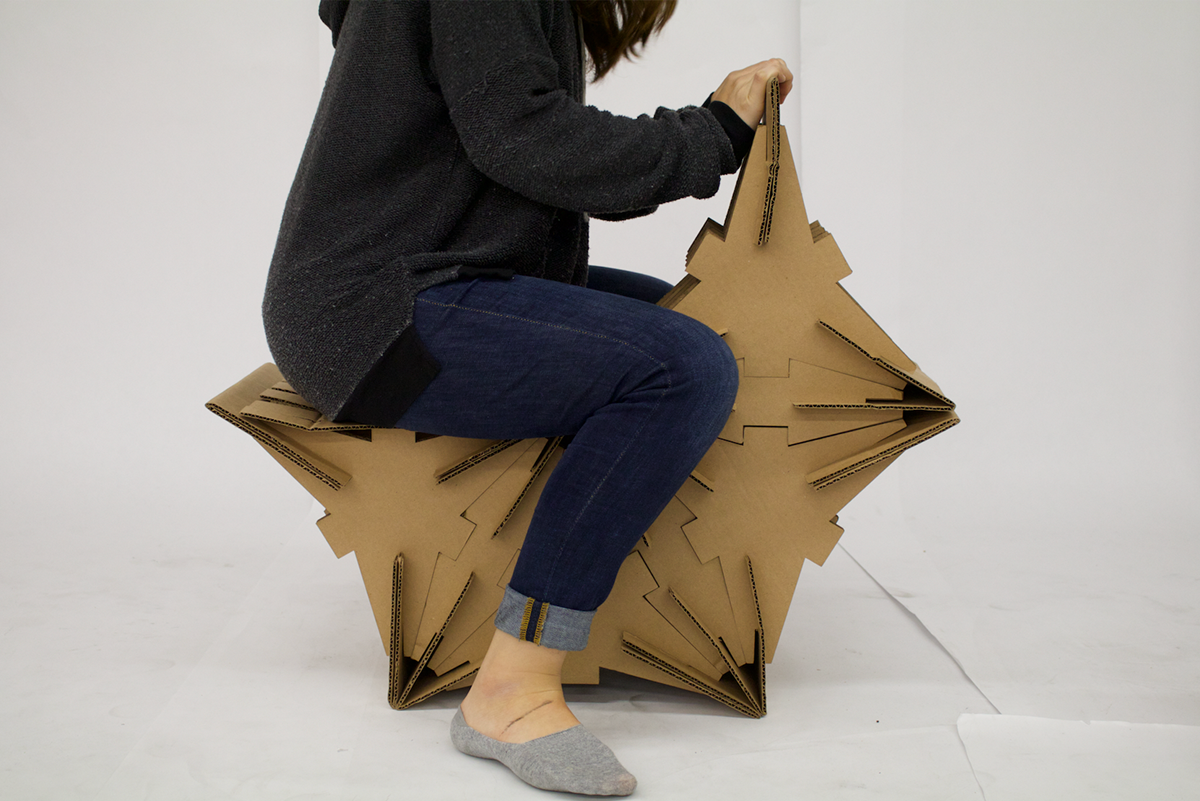
Configuration 24

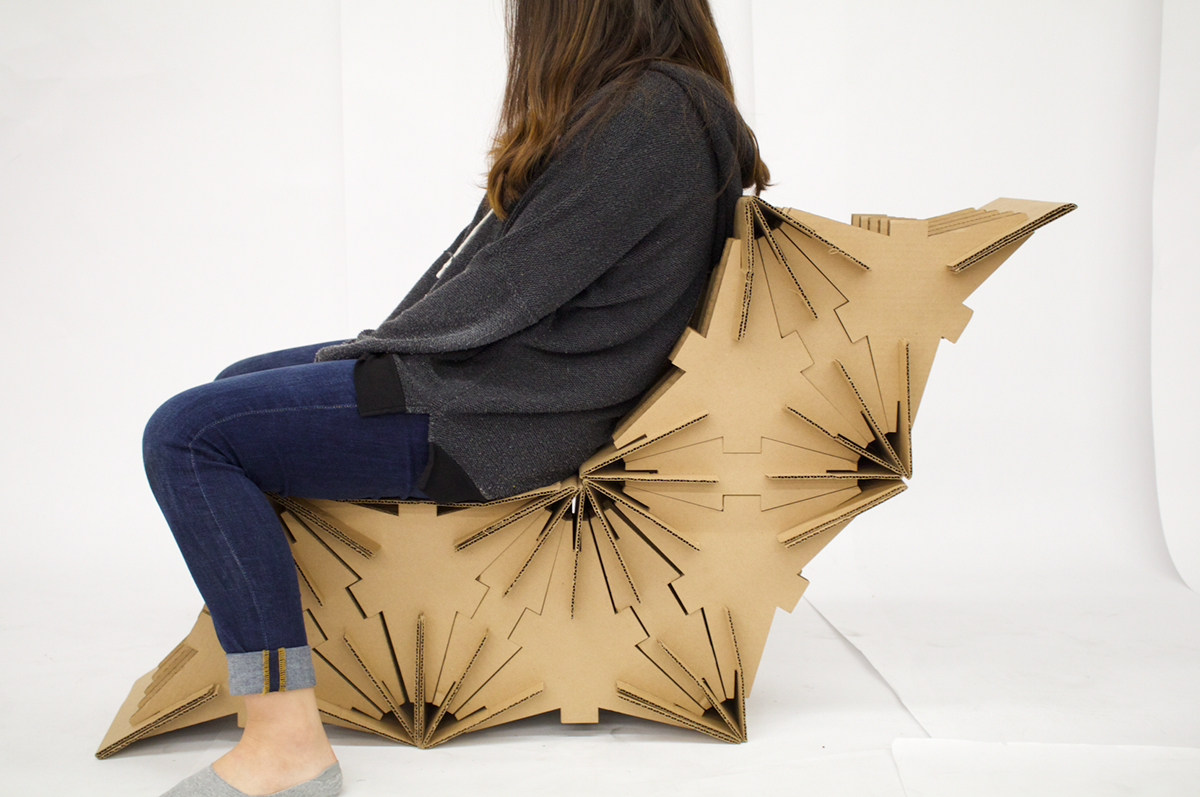
Configuration 25

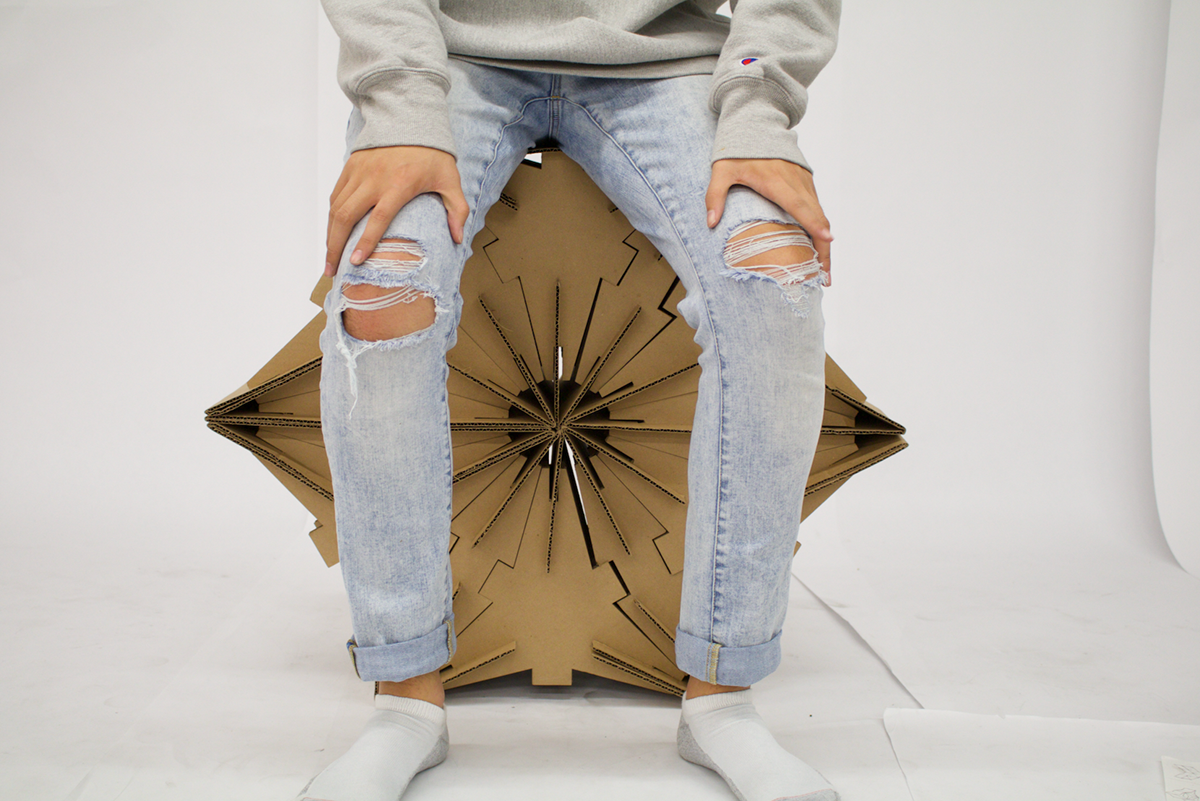
Configuration 26
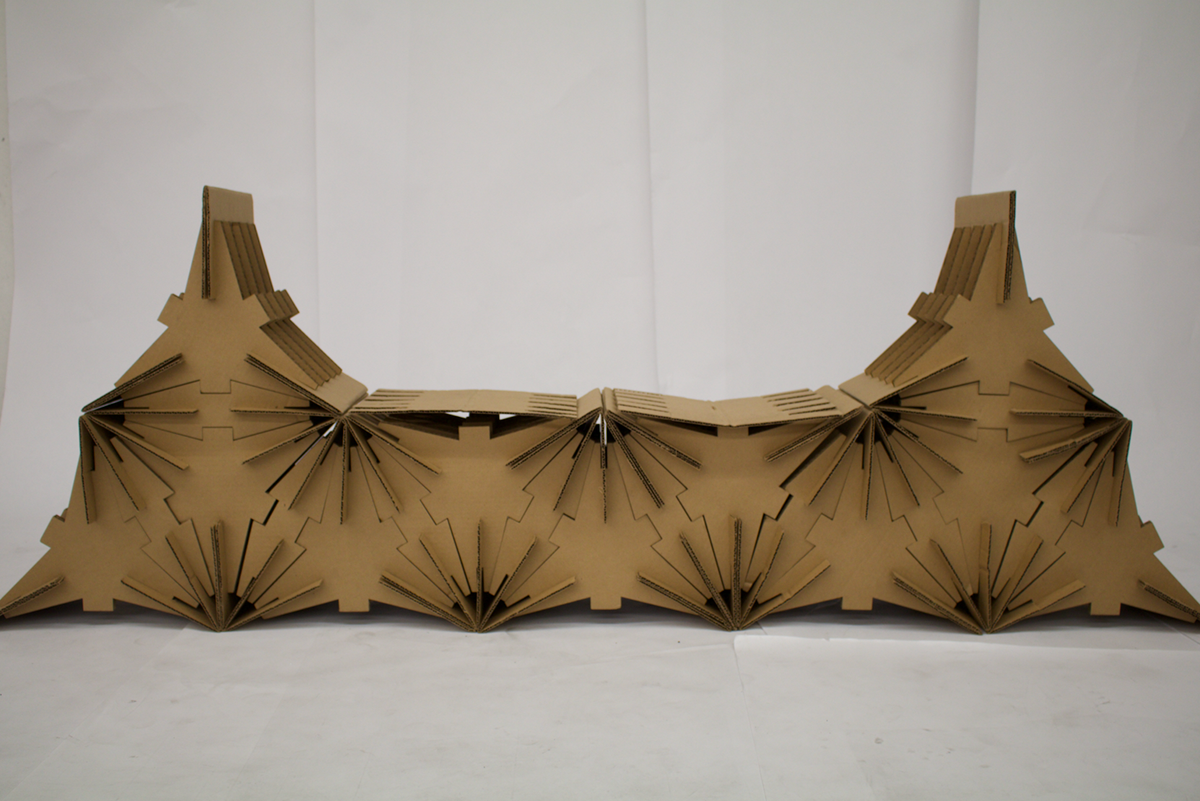

Configuration 27

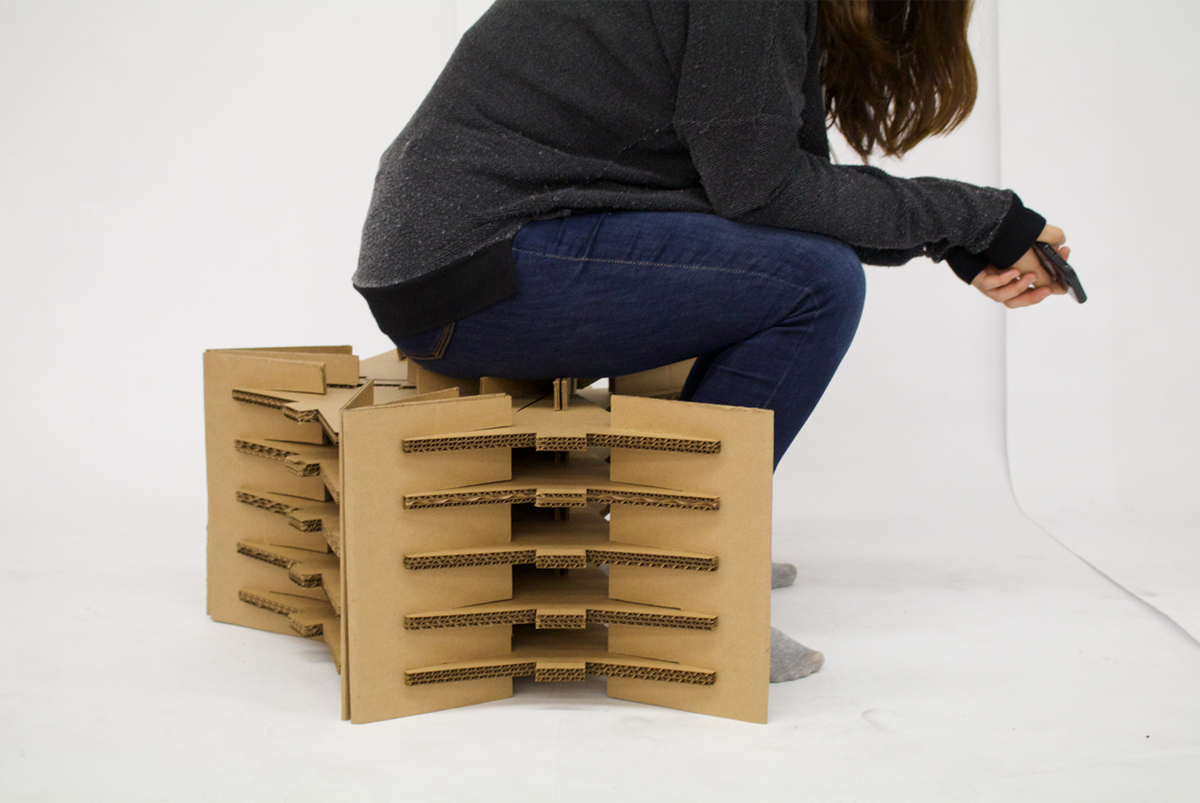
Configuration 28


Configuration 29


Configuration 30
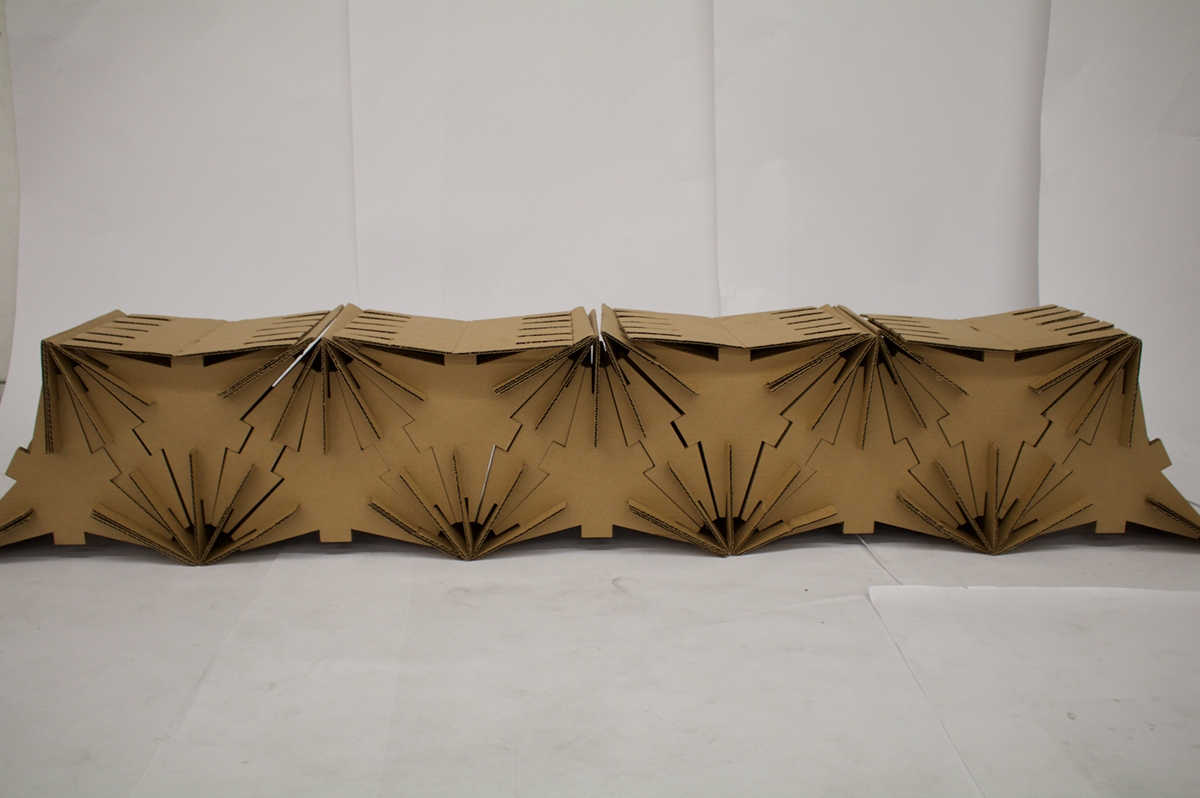

Configuration 31
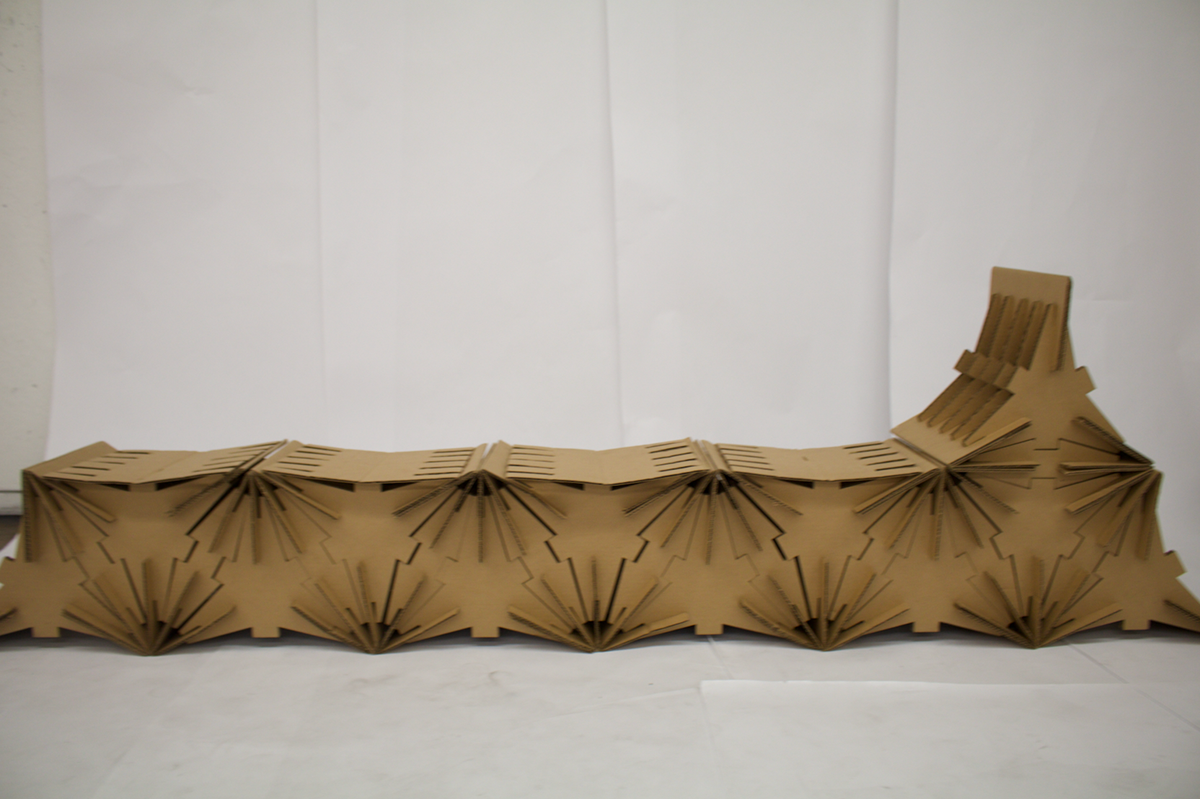
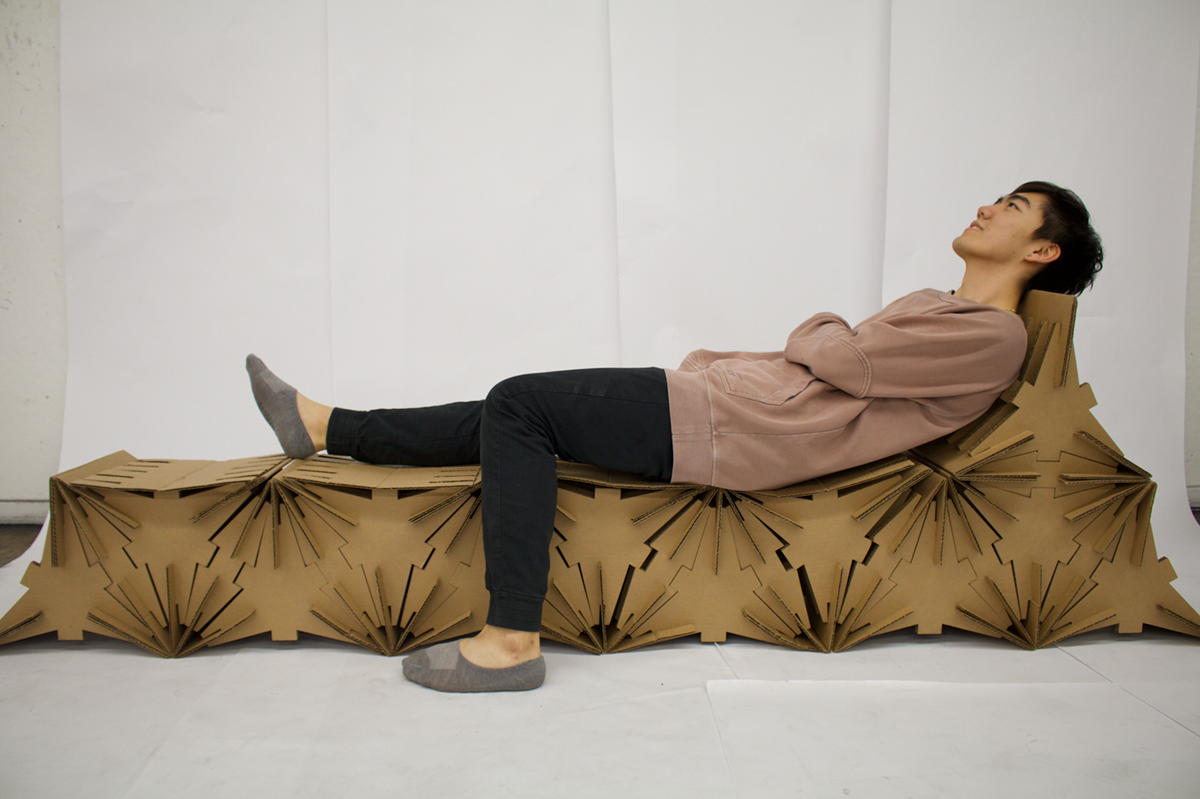
Configuration 32


Configuration 33

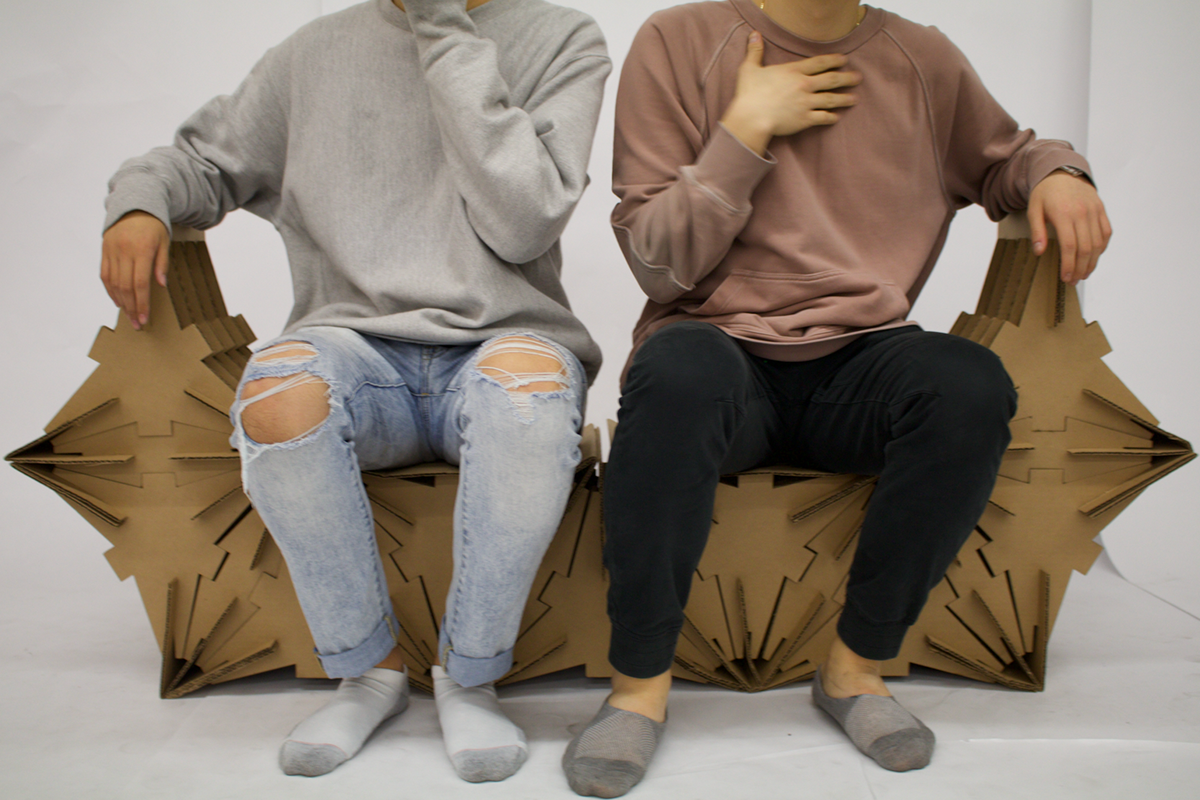
Configuration 34
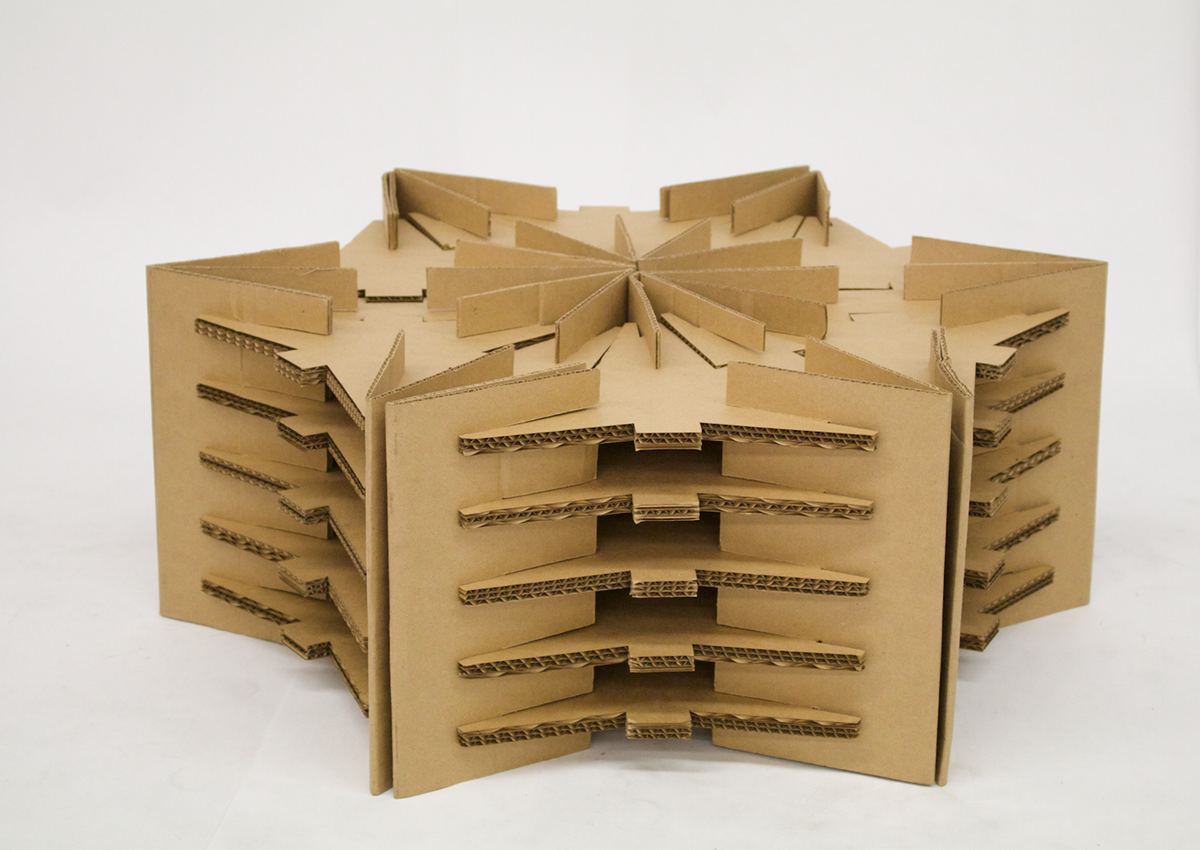

Configuration 35


Configuration 36

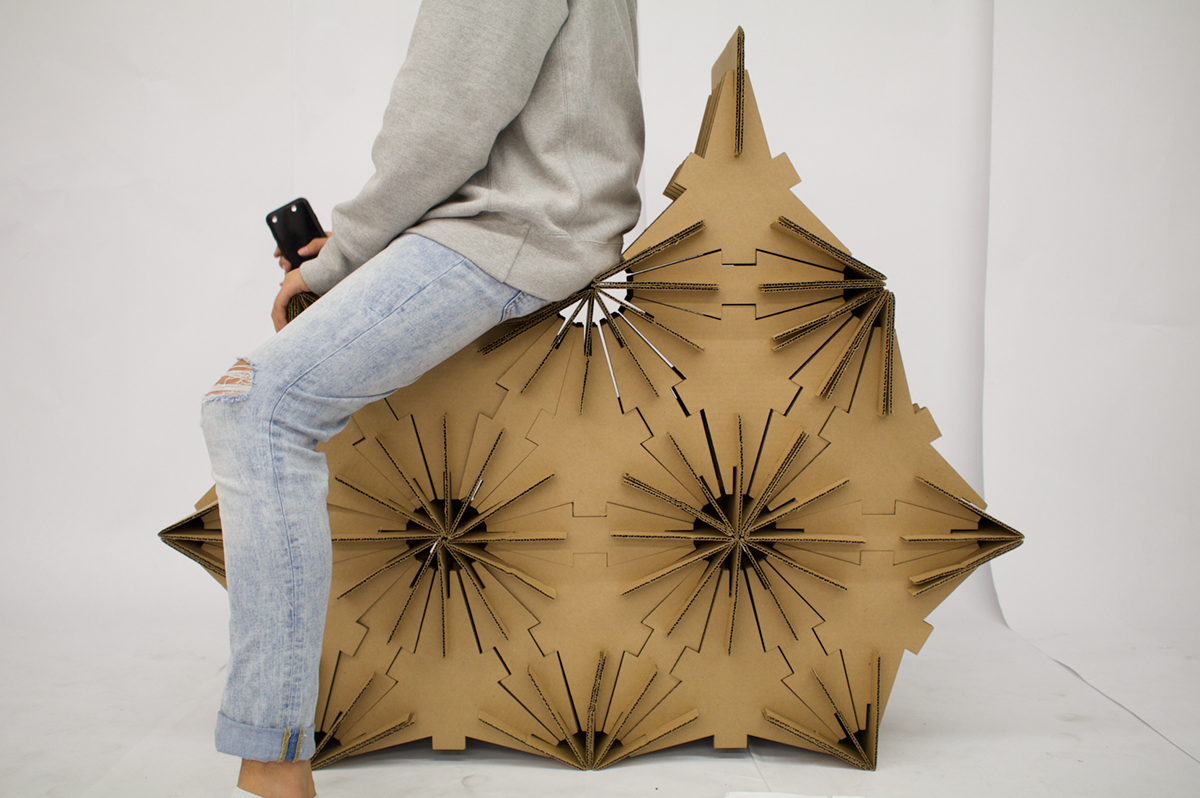
Configuration 37
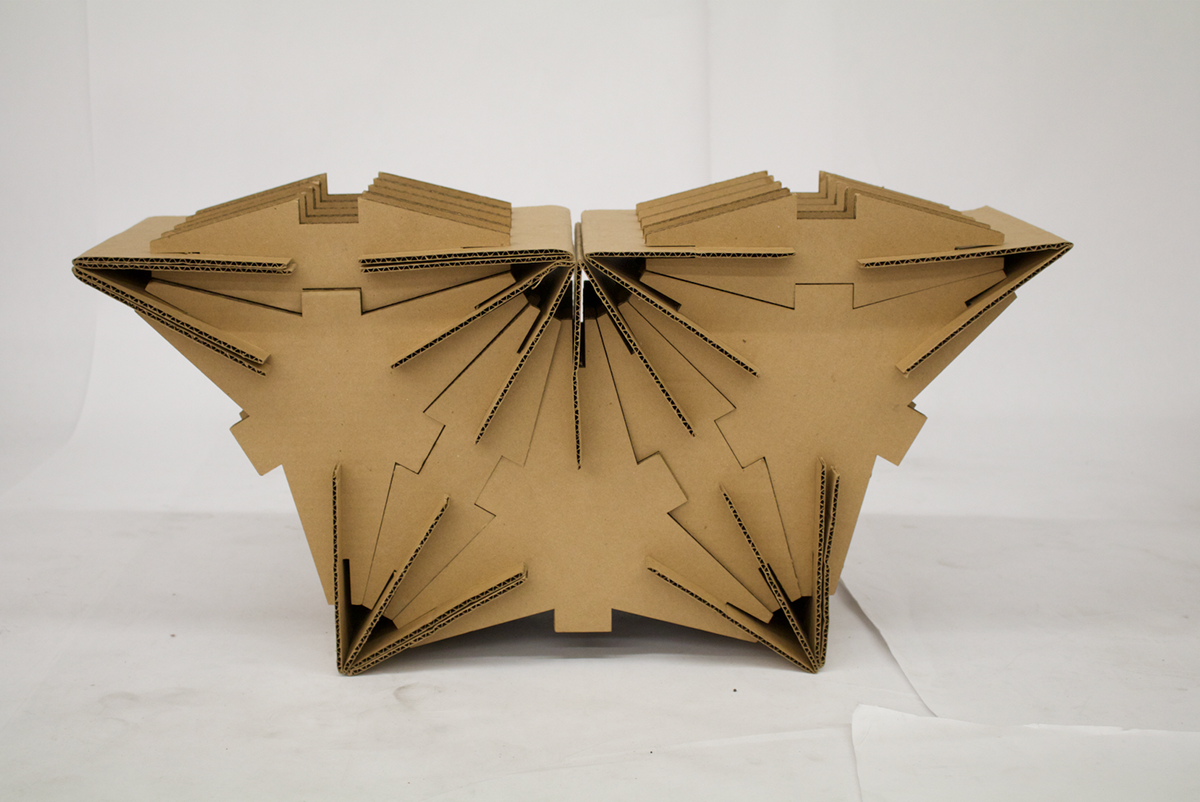

Configuration 38
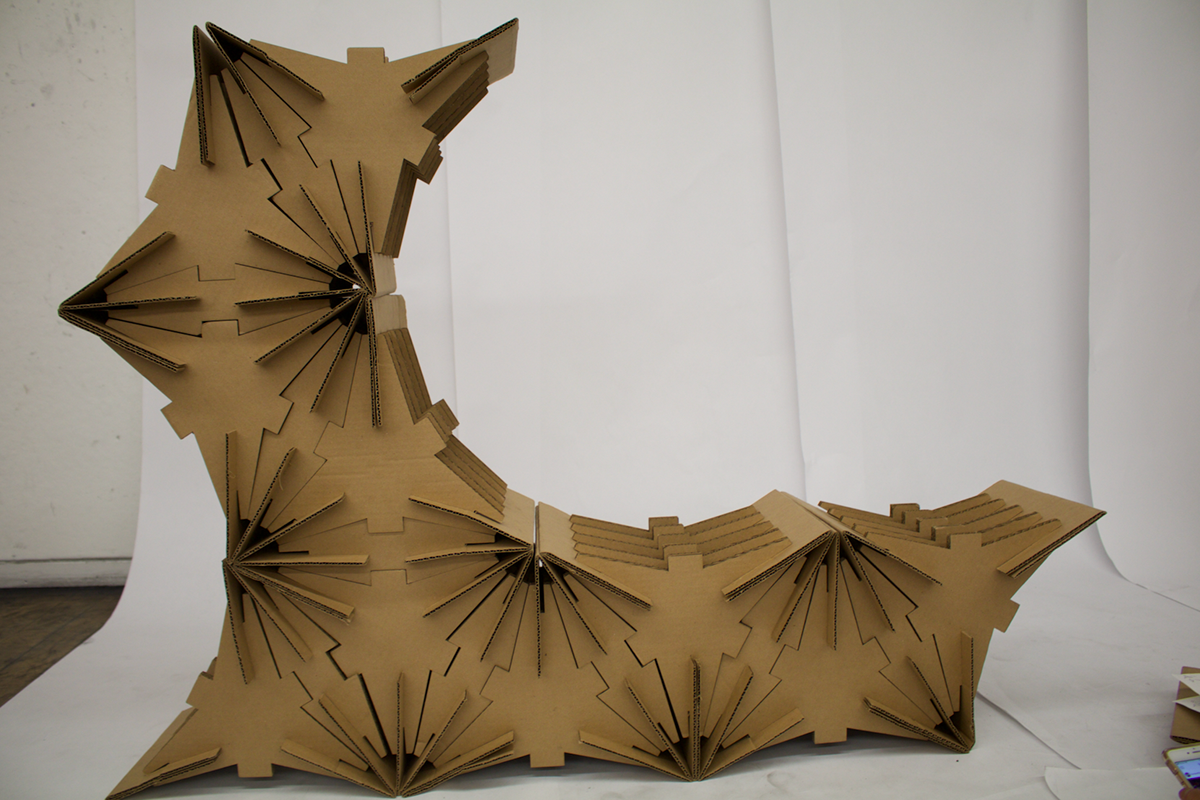
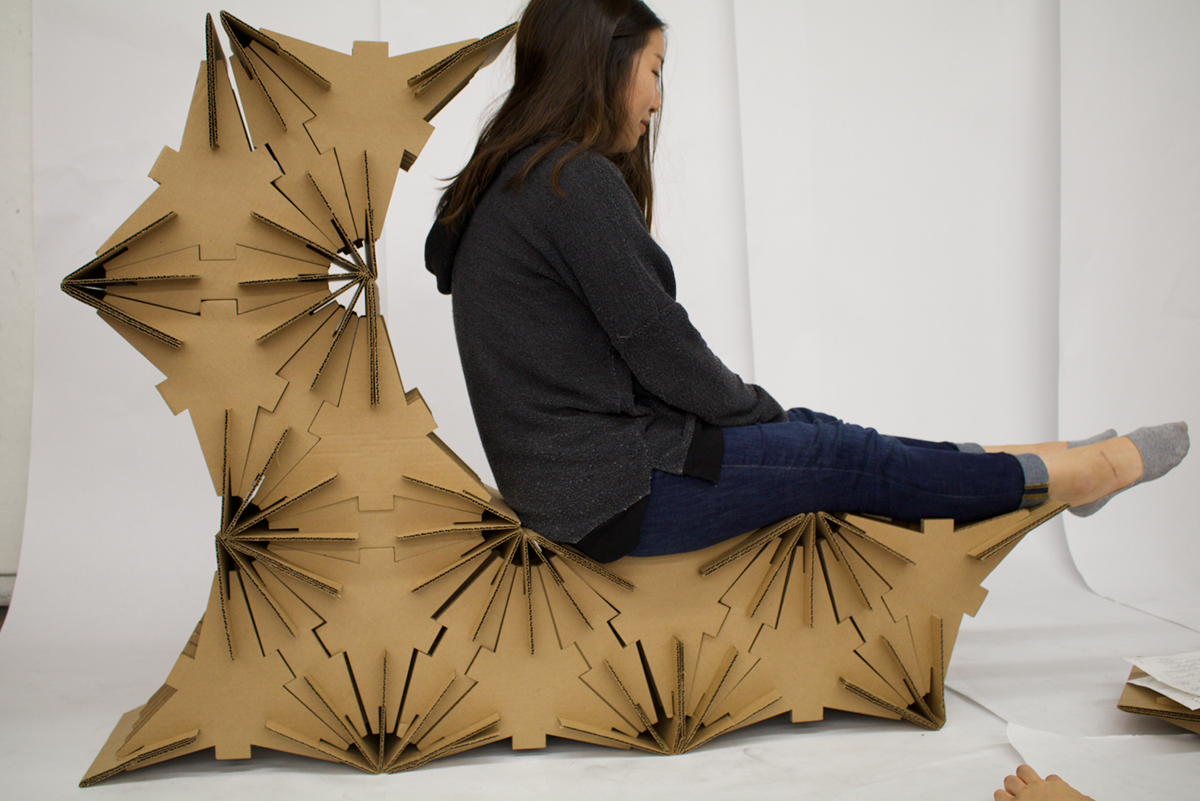
Configuration 39
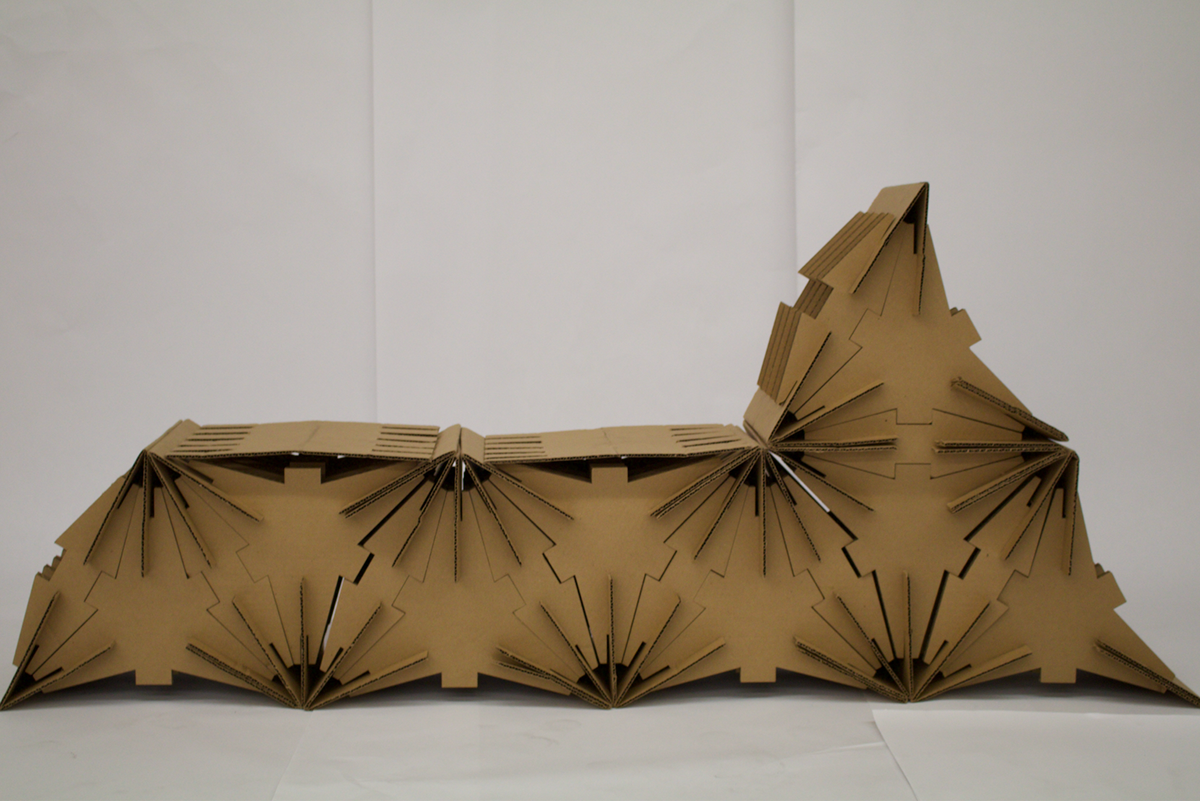

Configuration 40
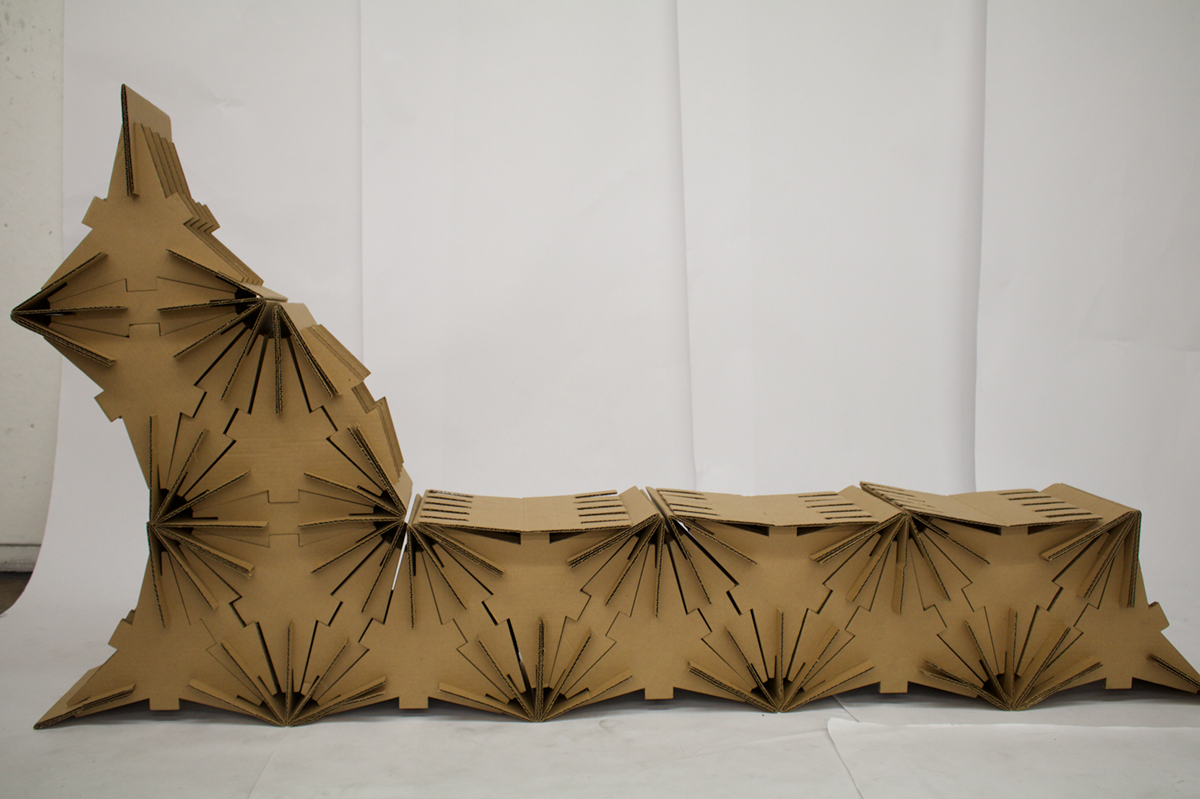

Each configuration is made only using the repetition of these three pieces of cardboard.
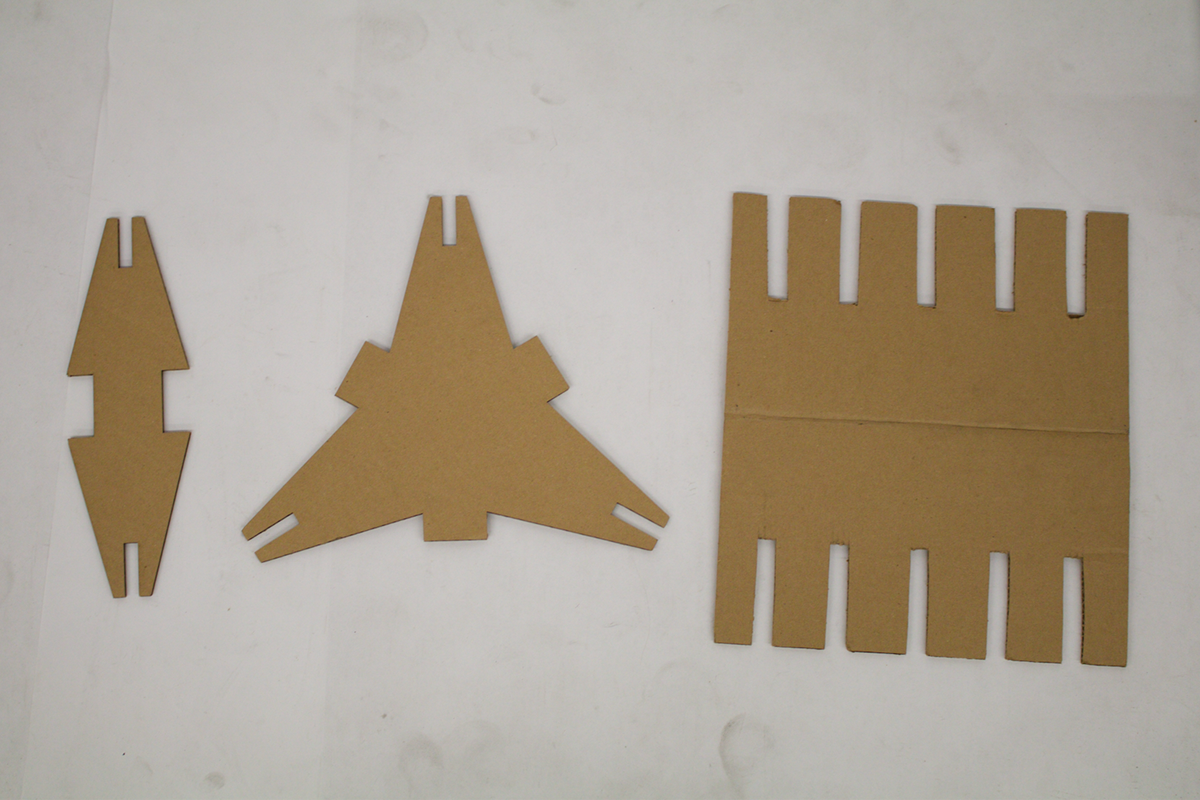
Thank You!


